

Meet the Urologic Surgery Team at MU Health Care

Mindy Cherrington, FNP
Advanced Practice Provider
I chose Urology because of the incredible team I’m privileged to work with each day. Collaboration, mutual respect, and shared dedication drive us to provide evidence-based care that improves our patients’ quality of life. Our department continues to grow, expanding services and expertise. Outside of work, I enjoy time with my husband, border collie, five children, seven grandchildren, swimming, puzzles, and reading.
Let’s get to know the Urologic Surgery Team at MU Health Care. We asked our surgeons and nurse practitioners to tell us why they chose Urology, to describe the best aspects of their team, to tell us what patients can expect when they receive care from the Urology Team, and to highlight anything that is new or most exciting about the Urology program at MU.


Catherine Muzzey, FNP
Advanced Practice Provider
Before becoming an Advanced Practice Provider, I served as a Urology Nurse Navigator for five years and fell in love with the patients and providers I worked with. Our Urology team is compassionate, collaborative, and family-oriented, providing patient-centered care with open communication. I’m excited about our growing specialties in robotic, reconstructive, and HoLEP procedures. Outside work, I enjoy supporting my three kids in their sports activities.

Jack Campbell, MD
Assistant Professor of Surgery
Urologic Surgery focuses on organs vital to quality of life and often addresses sensitive issues patients may hesitate to discuss. Our team treats every patient with the same care we’d want for ourselves, honoring their trust by going above and beyond. I’m excited about Dr. Daniel Au joining our team and offering the HoLEP procedure. Outside work, I enjoy time with my wife and our dog, Toddy.
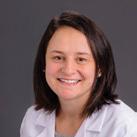
Eliza
DeFroda, MD
Assistant Professor of Surgery
Urology offers an incredible variety, combining lifechanging, minimally invasive surgeries with quick recoveries. Our team collaborates seamlessly, using each member’s strengths to provide the best patient care. Patients can expect evidence-based treatment, timely communication, and easy access for any concerns. We stay current with the latest techniques to continually improve outcomes. Outside of work, I enjoy exploring new restaurants, cheering on Mizzou, and spending time with my family.

Daniel Au, MD
Assistant Professor of Surgery
Urology offers the unique opportunity to build lasting patient relationships while solving complex problems through careful diagnosis and treatment. Our team is friendly, supportive, and always goes the extra mile to provide the latest, most effective care with patients’ best interests in mind. We continually introduce new treatments and innovations. Outside of work, I enjoy spending time with and spoiling my 90-pound dog, Chewie.

Oe Suk Hackney, ACNP
Advanced Practice Provider
I love working in Urologic Surgery because it combines surgical innovation with medical management and allows us to see life-changing patient outcomes. Our positive, collaborative team values each member’s expertise to provide comprehensive, patientcentered care that enhances quality of life. As our program expands, we’ll reach even more patients. I’m originally from South Korea and enjoy cooking Korean cuisine—though my husband swears my steak is best.

Julie Riley, MD
Professor of Surgery
I chose Urology because it combines surgical precision with long-term patient relationships and addresses conditions many avoid discussing. Our team is compassionate, supportive, and truly enjoys helping patients, which leads to better outcomes. I’m excited to
help develop a comprehensive stone center and expand the renal transplant program at MU. Outside of work, I’m a long-distance triathlete and devoted dog lover who fosters black labs.

Jodi Stoner, AHCNS
Advanced Practice Provider
I love working in urologic surgery because of the patients and the personalities of the staff and providers I get to work with. My team is friendly, helpful, knowledgeable, caring, kind, and fun. Patients can expect expert, compassionate care from the Urologic Surgery Team at MU Health Care, which continues to grow and advance. Outside of work, I enjoy gardening, exercising, reading, boating, and spending time with my family.

Erin Gubbins, PNP
Pediatric, Advanced Practice Provider
I love helping kids with urological problems and seeing their progress as they grow. Our pediatric urology team is a fun, well-oiled machine that works seamlessly to provide top-notch care right here in mid-Missouri. We stay up to date on new developments by attending conferences each year. Outside of work, I enjoy watching the Chiefs and Tigers, my kids’ sports, and reading.

Naveen Pokala, MD
Professor of Surgery; Director of Robotic Urology; Gil Ross Jr., Endowed Chair of Urology
I’ve always been passionate about caring for patients with urological
cancers and have performed over 2,000 robotic cancer procedures. Our multidisciplinary team collaborates closely with oncology and radiation oncology to provide compassionate, cutting-edge care. Patients can expect a dedicated, experienced team focused on their needs. Outside of work, I enjoy traveling with my family, reading, and playing table tennis.

Mark Wakefield, MD
Professor of Surgery; Chief, Division of Urologic Surgery
My mentors inspired a lifelong passion for urology, a specialty that continues to evolve through innovation and patientcentered care. Our team is dedicated to education, helping patients understand their conditions while training the next generation of urologists. With expertise across all subspecialties, we provide collaborative, around-the-clock care. Outside of work, I enjoy Columbia’s live music scene and, as a fun fact, I served four years in the Air Force.

Elizabeth Malm-Buatsi
Associate Professor of Surgery; Section Chief, Pediatric Urology
Pediatric urology allows me to combine surgical skill, compassion, and advocacy to make a real difference in children’s lives. I love the intellectual challenge, meaningful relationships, and opportunity to help kids live healthy, happy lives. Our team respects and supports one another while providing family-centered, accessible care. I’m especially excited about our advancements in robotic surgery and pediatric kidney stone treatment. Outside of work, I enjoy tennis and soccer.

COLUMBIA ROOTED IN
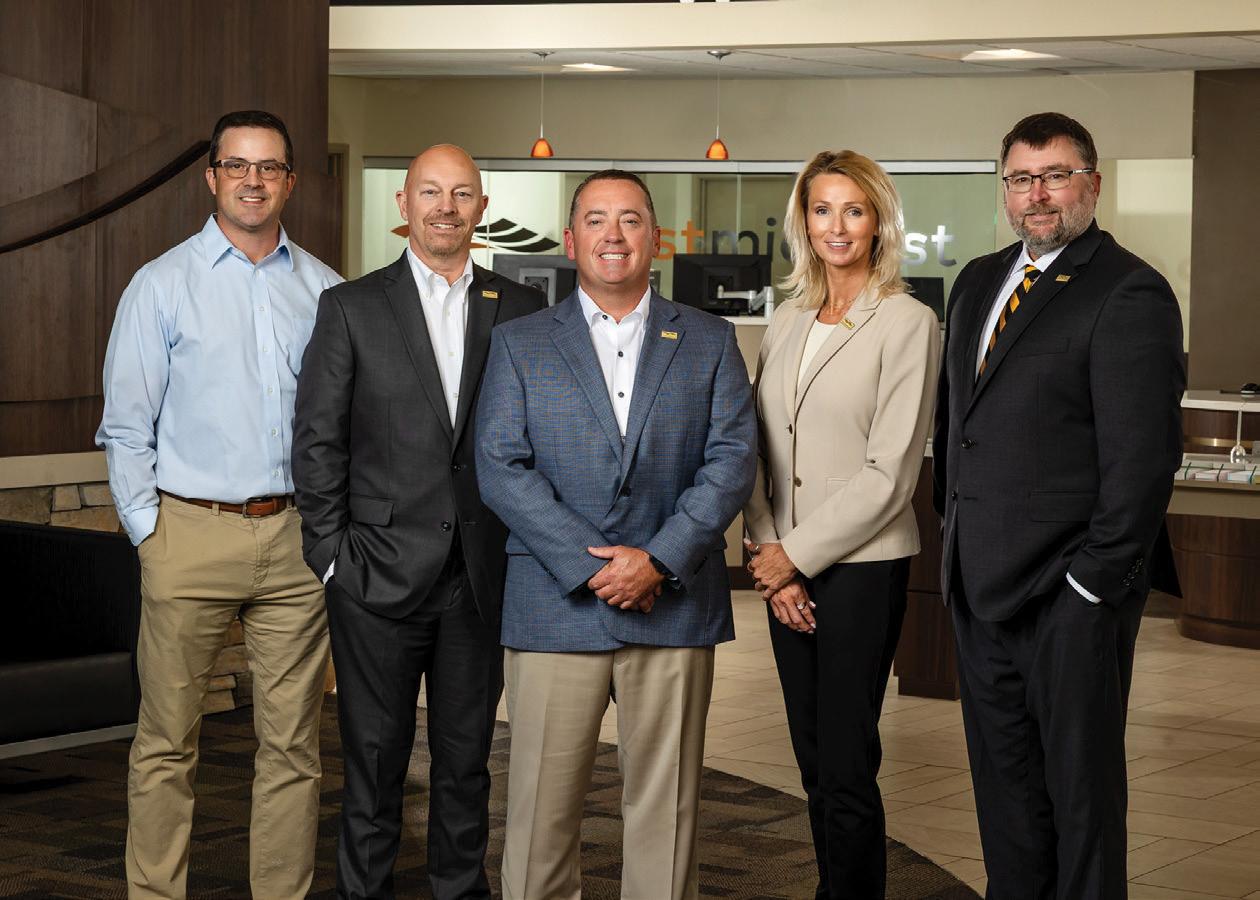
GROWING TOGETHER
As a true community bank with deep Missouri roots, First Midwest Bank has been helping the Columbia area thrive since 2010 – and we're just getting started. Visit our Columbia locations to explore personal and business banking — from kids’ debit cards to high-interest checking and flexible commercial solutions.
PUBLISHING
David Nivens, Publisher david@comocompanies.com
Chris Harrison, Associate Publisher chris@comocompanies.com
EDITORIAL
Jodie Jackson Jr, Editor jodie@comocompanies.com
Kelsey Winkeljohn, Associate Editor kelsey@comocompanies.com
Karen Pasley, Contributing Copyeditor
DESIGN
Jordan Watts, Senior Designer jordan@comocompanies.com
MARKETING
Charles Bruce, Director of Client Relations charles@comocompanies.com
Kerrie Bloss, Account Executive kerrie@comocompanies.com
CONTRIBUTING PHOTOGRAPHERS
Lana Eklund, Brandon Knight, Hoss Koetting, Job Point
CONTRIBUTING WRITERS
Beth Bramstedt, Barbara Bu aloe, Jodie Jackson Jr, Brandon Knight, Natasha Myrick, Michelle Terhune, Kelsey Winkeljohn
SUBSCRIPTIONS
Magazines are $5 an issue. Subscription rate is $54 for 12 issues for one year or $89 for 24 issues for two years. Subscribe at comomag.com or by phone. COMO Magazine is published monthly by e COMO Companies.
OUR MISSION STATEMENT
COMO Magazine and comomag.com strive to inspire, educate, and entertain the citizens of Columbia with quality, relevant content that re ects Columbia’s business environment, lifestyle, and community spirit.
Copyright e COMO Companies, 2025
All rights reserved. Reproduction or use of any editorial or graphic content without the express written permission of the publisher is prohibited.
FEEDBACK
Have a story idea, feedback, or a general inquiry? Email our editor at Jodie@comocompanies.com. CONTACT e
Nathan Anderson • Scott Nelson
Jacob Kellett, Market President
Jenny Williamson
Jason Ramsey
The COMO Mojo: Community is Key
Two million years ago,
our common ancestor Homo erectus lived a very di erent life from ours. ey looked di erent, had signi cantly smaller brains (not a diss, just facts), and yet, in many ways, their lives weren’t so unlike ours. ey used tools. ey made art. And perhaps the most striking parallel of all: they thrived in social groups. ey experienced community much like we do today.
About a month ago, editor Jodie and I visited the Sager Reeves Gallery to meet with Joel Sager. I’d stopped in once before for a First Friday not long after moving to Columbia, but the gallery was packed, and the memory is fuzzy. is time, the gallery was quiet. Sunlight spilled through the windows and soft music drifted through the empty space. We were there to talk about how we could collaborate on the gallery’s artistic campaign exploring local artists, notable Columbians’ art collections, and the ways people curate their spaces and connect with art. It was refreshing to connect with Joel — a fellow creative (who is extremely talented at what he does) — and to revel in his passion for this campaign. At its core, the project reminds us that art isn’t reserved for a select few. It’s a shared language that lives and breathes among us all. Creativity, like community, belongs to everyone. ose same themes of creativity and connection kept resurfacing throughout October — during a tour of the Columbia Center for Urban Agriculture, and again at the farmers market. Visiting CCUA was especially rewarding after featuring them in our June issue. Seeing rsthand how many hands come together to grow and share good food
with our neighbors was both inspiring and humbling. While shopping at the market afterward, I couldn’t help but reect on how grateful I am for our local and local-adjacent farmers who work tirelessly (and creatively!) to bring their harvests to our tables.
And then there are those who go even further by nurturing community in the smallest, kindest ways. One of my favorite vendors, Jean Nicklas of Jowin’s Kitchen, has become a familiar and welcome face. Back in February, I wrote a story about her business, and not long after, she surprised our o ce with a massive gooey butter cake as a thank-you. Now, every time I see her, I buy another mini cake (partly because I love supporting her, but mostly because it’s that good).
e last time our paths crossed, I mentioned how I’d forgotten to wear sunscreen, and she immediately o ered me hers. It was such a small moment, but it reminded me how community is built through generosity, gratitude, and the simple act of supporting each other.
Columbia is in no short supply of community-building opportunities and people who make the place we live feel like home. I hope you enjoy our “Community” issue, featuring stories about Flourish’s Art Shed, Columbia’s keynote speakers, and Missouri Connections for Health. As always, we’re all ears for your feedback.


KELSEY WINKELJOHN ASSOCIATE EDITOR kelsey@comocompanies.com
’Tis the Season for Giveaways!
Scan the QR code to enter COMO Magazine’s holiday giveaway for tickets to the Merry Ol’ Missouri Christmas Spectacular!

Shelter Gardens celebrates 50 years as one of Columbia’s most cherished spaces. Photo by Lana Eklund
COMO’S ADVISORY BOARD
We take pride in representing our community well, and we couldn’t do what we do without our COMO Magazine advisory board. Thank You!
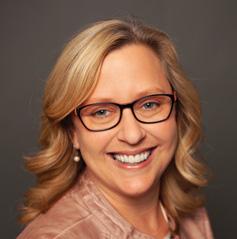
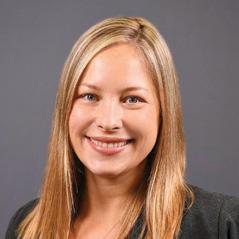
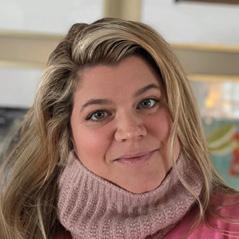

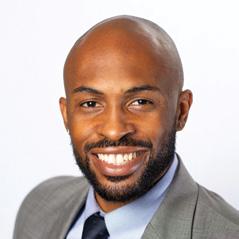


Beth Bramstedt
Church Life Pastor, Christian Fellowship Church
Heather Brown
Strategic Partnership Officer, Harry S Truman VA Hospital
Emily Dunlap Burnham
Principal Investigator and Owner, Missouri Investigative Group
Tootie Burns
Artist and Treasurer, North Village Art District
Chris Horn
Principal Treaty Reinsurance Underwriter, American Family Insurance
Jeremiah Hunter
Assistant Police Chief, Columbia Police Department
Kris Husted
Investigative Editor, NPR Midwest Newsroom


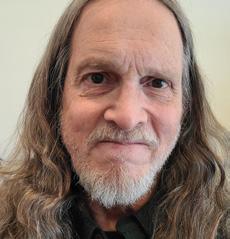



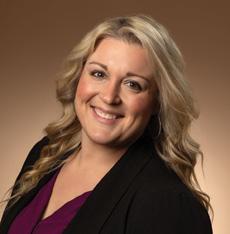
Laura Johnson Writer
Laura Schemel
Director of Marketing and Communications, MU Health Care
Art Smith
Author & Musician, Almost Retired
Megan Steen
Chief Operating Officer, Central Region, Burrell Behavioral Health
Nathan Todd
Business Services Officer, First State Community Bank
Casey Twidwell
Community Engagement Manager, Heart of Missouri CASA
Wende Wagner Development Manager, DeafLEAD
Have a story idea, feedback, or a general inquiry? Email Jodie@comocompanies.com.
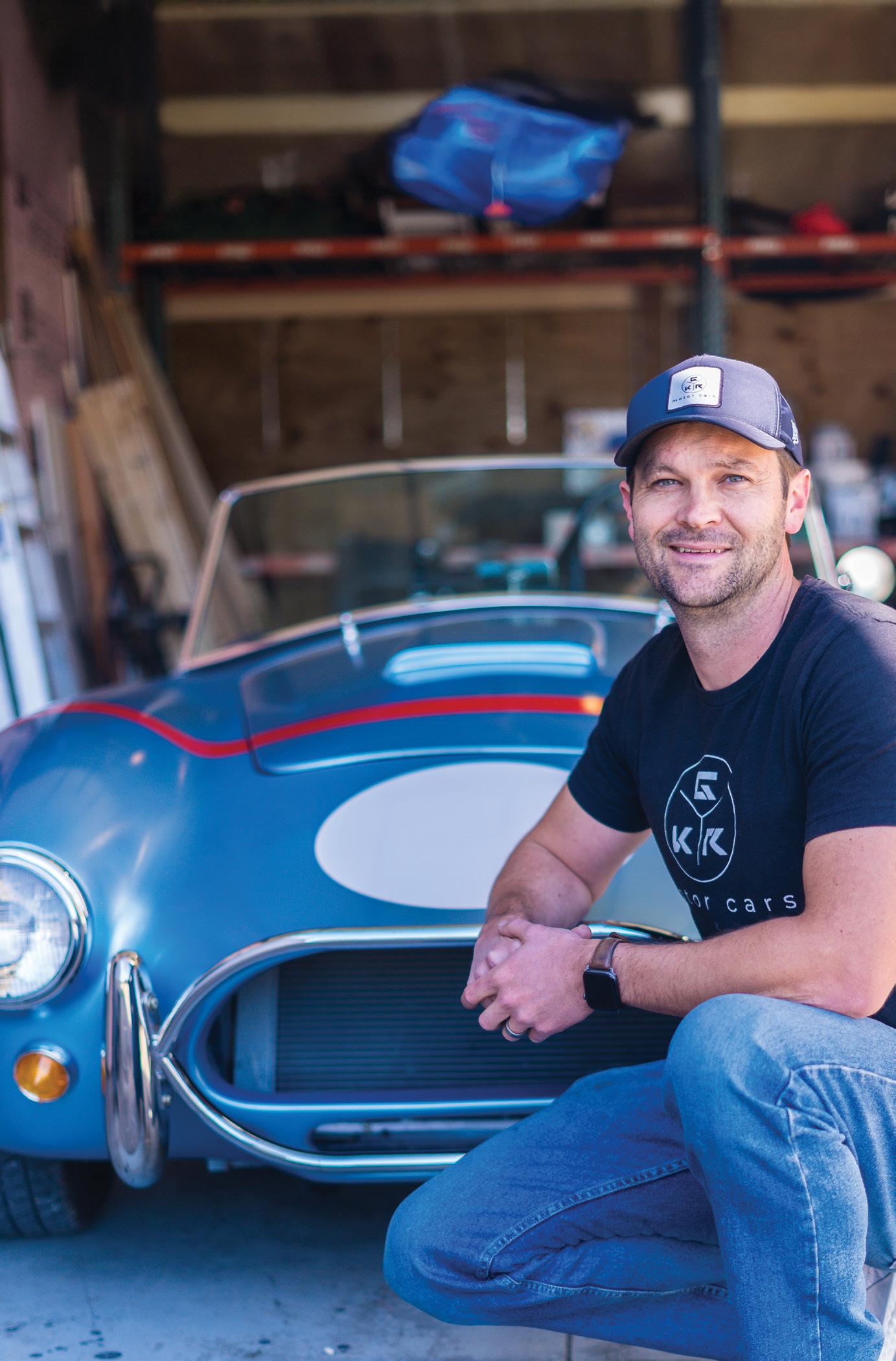

Wade Coonce is a personal banker at our Smiley Lane location. He consistently demonstrates an exceptional work ethic and dedication to his role! He goes above and beyond and provides support and guidance to his coworkers. He cares deeply about performing his role at the highest degree and is truly a Legendary employee!
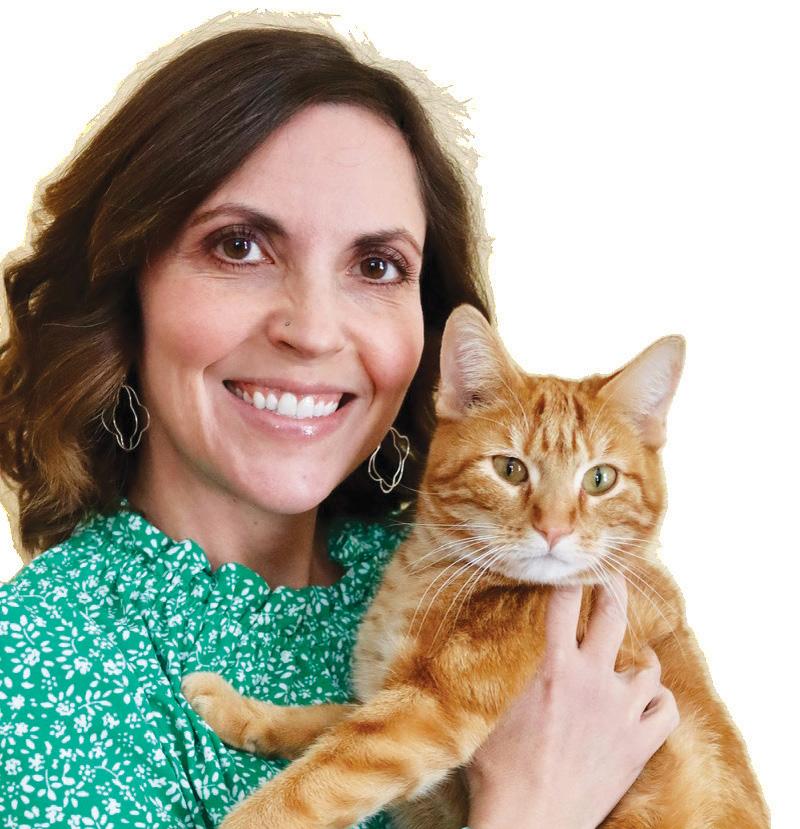
At Heartland Veterinary Surgery our purpose is to provide the best surgical experience possible. Dr. Luther brings over 15 years of expertise as a boarded surgeon into your trusted local veterinary clinic where you and your pet are known and loved. We offer a variety of advanced soft tissue procedures such as ear canal ablation, surgery of the abdomen and urinary tract, and many types of cancer surgery.


573-874-8100 • centralbank.net/boonebank









A French Country Estate Like No Other
Presented by The Walters Team Realty | Photos by Chris Jansen w/ Market Focus Media
Tucked away on 5.2 secluded acres in Columbia, Missouri, a rare gem awaits — a French Country estate that feels more like a private retreat than a residence. Fully reimagined and flawlessly renovated, this one-of-a-kind property is now available through The Walters Team Realty, Columbia’s trusted name in luxury real estate.
A Home Built for a Builder — Remade for You
Originally crafted as a builder’s personal home, every square inch speaks to quality and intention. The full stone masonry, stamped concrete patios, and private drive create a stunning first impression. Step inside, and the details only deepen — five bedrooms, 3.5 bathrooms, and a floor plan that blends warmth with refined elegance.
From the chef’s kitchen to the sunlit great room, each space is designed to feel both grand and grounded. High-end finishes, hand-selected materials, and magazine-worthy views frame your daily life in style.
A Private Lake, a Hidden Waterfall, and a Carriage House with Charm
The grounds are equally breathtaking. Lush landscaping leads to a custom
waterfall and river feature that empties into your own spring-fed private lake. Yes, your own lake.
Looking for flexibility? A renovated carriage house sits quietly on the property, offering a fully equipped one-bedroom loft apartment — perfect for guests, extended family or a creative studio.
Direct Access to Southfork Lake
At the back of the property, a quiet path leads you to Southfork Lake — a peaceful, private escape ideal for morning coffee, afternoon paddling, or simply unplugging from the world.
Schedule a Private Showing with The Walters Team
This isn’t just another luxury listing — it’s a landmark estate with soul, space, and a story. Homes like this don’t come along often, and they don’t stay on the market long.





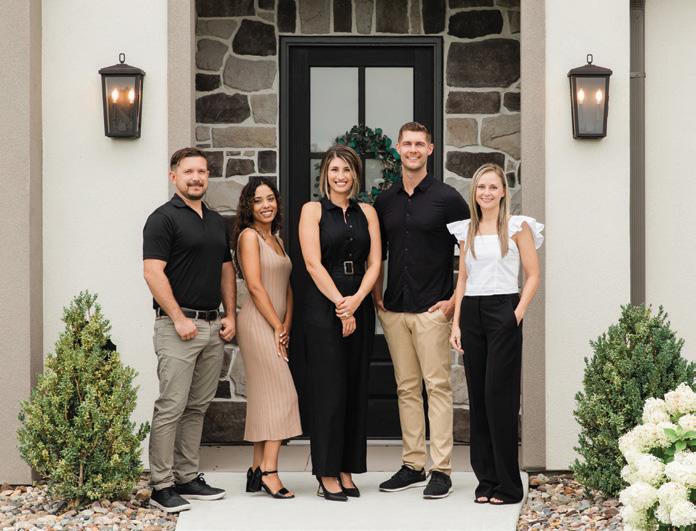
For more information, scan the QR code to see the full listing.



The Ins and Outs of Pet Insurance
Some plans are popular, but but getting reimbursed depends on
the pet owner.
BY NATASHA MYRICK
Americans spent more than $39 billion on veterinary care and products in 2024, and that number continues to climb. With veterinary bills skyrocketing, pet insurance has become a quickly growing trend in pet care.
“Pet insurance is so huge right now,” said Bobbi Wilson of Peace Love Paws Pet Sitters. e cost of everything continues to rise, including veterinary care. Over the past ten years, veterinary costs in the U.S. have increased by more than 60 percent, according to the Independent Veterinary Practitioners Association. Even low-cost clinics have been forced to raise their prices due to in ation. But pet insurance can help give pet owners a safety net so they have backup coverage for veterinary costs.
“Five years ago, we didn’t really have clients who had pet insurance. It wasn’t anything people talked about, and now we are starting to have clients asking about it,” Wilson said. “It is de nitely trending.” Insurance Journal reported that in the U.S. alone, the total value of pet insurance is currently more than $4 billion — and it’s rising every year. According to NerdWallet, the average pet insurance cost is about $62 per month for dogs and $32 per month for cats for the most common type of policy.
While some people in the pet industry are nding pet insurance to be trending, others have di erent opinions.
“Pet insurance has increased in popularity, but it is de nitely not popular,” said Dr. Christy Fischer, veterinarian at All Creatures Animal Hospital in west Columbia. “We have maybe ten to twenty clients who use it out of 1,000 active clients.” She thinks that one advantage of having pet insurance is that insured pet owners are often more willing for their pets to undergo diagnostic tests, rather
than holding o on incurring that cost until a problem arises.
Most vet practices, including All Creatures, don’t le pet insurance claims for pet owners. Instead, they simply provide any requested records to the pet insurance company. While All Creatures doesn’t advertise pet insurance, new clients are sent home with a welcome packet that has brochures about some pet insurance options.
BUYER AWARENESS IS KEY
While veterinary costs and interest in pet insurance are on the rise, nding an insurance broker in Columbia that o ers pet insurance policies can be di cult. Gioia Baysinger of Columbia had pet insurance o ered through her job for six months before realizing that her veterinarian did not accept it.
“Looking into it further, it was a vet discount program and not necessarily insurance. However, it did cover most things that insurance would cover, with the di erence being that it’s not accepted everywhere,” she said.
Baysinger signed up for Pet Assure during open enrollment with her job. On the Pet Assure app, it said that her veterinarian accepted the plan. However, when she called her vet to con rm this, they said they hadn’t taken it for years.
“ ere was really just a lack of accurate information,” she explained, adding that pet insurance should be more widely o ered and accepted.
Online, there are many di erent options for pet insurance, such
as Lemonade, Trupanion, Wagmo, and more. Plans vary according to the type of coverage you’re seeking, the age and breed of your pet, and other factors, such as preexisting conditions.
Along with insurance, there are pet wellness plans that serve as a reimbursement program for annual visits and exams for your pet. Pet wellness plans typically do not require you to use an approved or preferred veterinarian. On the other hand, pet insurance can cover more unexpected or emergency costs than a wellness plan does.
Before committing to a pet insurance plan, call your preferred veterinarian and con rm that they accept the insurance you’re considering. Many veterinary o ces have information about pet insurance if asked. A quick conversation with your veterinarian could save you time and money, ensuring your pet gets the care it needs.
Beyond taking care of a pet’s medical needs, Bobbi Wilson is passionate about educating pet owners for being “pet prepared” in case of emergencies and natural disasters. She emphasized the following six points:
1. Make sure your pet is microchipped. This practice makes it 50 percent more likely that a lost pet can be reunited with its owner. It’s free to scan for a microchip at a veterinary office.
2. Maintain updated information on your pet. This includes photos, rabies certificates, and details on their emergency needs, such as medications, health concerns, and anything about your pet that someone would need to know. It is important to keep this information easily accessible.
3. Have at least two designated people who are going to take care of your pet if you die.
4. Have at least a two-week supply of food and medication on hand at all times and keep it where it can be easily found.
5. Practice disaster plans (for tornadoes, fires, etc.) with your family, and be sure to include your pet in them as well.
6. Have an emergency kit. An emergency kit for a pet is almost the same as what a human needs, like medications and identification.
Connecting Missourians to Care, Confi dence, and Clarity
Missouri Connections for Health guides Missourians through the maze of health care.
BY KELSEY WINKELJOHN
For those unfamiliar with the ins and outs of health insurance, enrolling in a new plan or deciding to stay with the same one can feel overwhelming. Policies and the health care landscape are constantly evolving, and amid the demands of daily life, it can be challenging to choose the best option and complete enrollment on time.
For nearly twenty- ve years, the local nonpro t Missouri Connections for Health (MCH) has provided unbiased assistance to Missourians navigating their health care and health insurance needs. Its primary mission, as stated on GuideStar, a resource for data on nonpro ts, is “to help individuals learn about, enroll in, and take advantage of health insurance programs for which they may be eligible.”
Executive Director Scott Miniea, who has been with the organization for eight years and brings more than thirty years of experience in the nonpro t sector, said he was once unfamiliar with the health care system himself until he needed to seek help for his own family.
“I discovered the organization as it was helping me,” Miniea says, adding that’s how many of his sta members rst became involved.
Miniea started as a program manager back when the organization operated under Primaris Holdings. Now, as executive director, he oversees operations and ensures the success of its initiatives.
PROGRAMS THAT EMPOWER MISSOURIANS
As part of its ongoing e orts to create an informed and empowered community, MCH o ers three main programs: the Missouri State Health Insurance Assistance Program (Missouri SHIP), the

Bene ts Enrollment Center, and the Rural Unhoused Helpline.
e Missouri SHIP program primarily focuses on assisting and educating individuals who have become eligible for Medicare, including those who have turned 65 and people with disabilities. For those who may experience cognitive decline, chronic illness, or pain, understanding the many aspects of Medicare can be daunting. Missouri SHIP provides help with Medicare enrollment, resolving billing issues, and selecting prescription drug, Advantage, Medigap, and Supplemental plans.
“It’s our big kahuna of programs,” says Miniea. “It kind of drives everything else we do.”
e Bene ts Enrollment Center operates within the SHIP program, but it has a more targeted focus: helping people on Medicare access additional programs that support independent living, such as the Supplemental Nutrition Assistance Program (SNAP) and the Low Income Home Energy Assistance Program (LIHEAP). Unfortunately, the Bene ts Enrollment Center is currently on pause.
“Funding was caught up at the federal level,” Miniea explains. “But we’ll be applying to restart a new round of that grant in January.”
Lastly, the Rural Unhoused Helpline, though MCH’s smallest project, plays a signi cant role by providing the housing-related intake assessments required
Missouri Connections for Health
FOUNDED: 2001
PURPOSE
Educating and empowering individuals and communities to make informed decisions in a complex health care environment.
BOARD OF DIRECTORS
• Julia Vargas, President/Chair
• Steve Calloway, Vice President
• Tami Benus, Secretary/Treasurer
• Carol Beahan, Director
• Randy Rodgers, Director
• Allison Schwent, Director
• Josh Oxenhandler, Director
• Jason Kane, Director
• Sunitha Bosecker, Director
SERVICES
• Licensed Healthcare.gov Navigator assistance with:
• Healthcare.gov/Marketplace insurance
• Medicaid (MO HealthNet)
• Children’s Health Insurance Program (CHIP)
• Marketplace to Medicare transition
• Medicaid/MO HealthNet to Marketplace transition
• Understanding your options when you change jobs
• Understanding your options when you retire early
• Help understanding what your insurance policy covers
• Help understanding where to go to get healthcare covered by your insurance
• Insurance questions and appeals assistance
• Referrals to other organizations that can help
for someone experiencing homelessness to be recognized by the U.S. Department of Housing and Urban Development.
Launched in 2021 as a pilot project, the Helpline extends MCH’s reach beyond health care to address housing insecurity in rural areas. Working in partnership with local housing agencies, it connects clients to Coordinated Entry assessments and directs completed evaluations to regional organizations that can provide direct services.
anks to a Missouri Foundation for Health grant, the initiative builds on MCH’s existing call center infrastructure to address a critical gap in rural counties that lack the capacity to complete assessments independently.
EDUCATING AND ENGAGING THE PUBLIC
In addition to its programs, MCH also participates in public outreach, collaborating with libraries and community groups to o er classes and webinars.
“[ e classes] are upon request,” says Miniea. “We have some that are fairly typical — ones that we do over and over with the same kind of content, like a 101 on the parts of Medicare and how they t together and what SHIP is. en we have one about saving money on Medicare and how to stretch your Medicare dollar. We also have some that go over volunteer opportunities.”
With MCH’s limited nances, outreach events also serve as a valuable way for the nonpro t to connect with those who may need its services or those looking for meaningful volunteer work.
MEETING GROWING DEMAND
Currently, MCH is in its busiest season; Medicare’s open enrollment began in mid-October and will run through early December. It’s during this time that the need for guidance peaks, as more Missourians seek support navigating complex coverage options.
As for the SHIP program, Miniea says the demand continues to grow, pushing the organization’s limits. MCH’s website states that client contacts increased from 1.2 million in 2005 to more than 3.4 million in 2014 — and that number can only rise as the tail end of the Baby
Boomer generation and Generation X age into Medicare eligibility.
Miniea expresses deep gratitude to the sta and volunteers, both of which undergo signi cant training to help counsel clients, making the nonpro t’s mission possible. MCH relies on trained volunteers to help meet community needs, but unlike many organizations, it seeks long-term volunteers because they receive the same rigorous training as sta , enabling them to stay informed about changing Medicare policies and provide better assistance to clients.
“We invest a lot of time into training,” he says. “All of our counselors go through rigorous training to be certi ed. We also have ongoing requirements, like twelve contact hours in update training. We do a webinar every month, and we have a newsletter where we share information with them.”
ose who are interested in MCH’s mission and willing to invest their time are encouraged to inquire about volunteering. MCH also accepts recurring and one-time donations. Among other things, these nancial contributions enable MCH to:
• Conduct housing assessments for individuals or families experiencing a housing crisis
• Counsel clients on their insurance options and assist them in applying for bene ts
• Hold outreach events targeted at hard-to-reach Missourians
rough its programs, outreach, and dedicated volunteers, Missouri Connections for Health continues to ensure Missourians aren’t left to navigate health care coverage and related challenges alone. To learn more about volunteering, donating, or educational opportunities, visit moconnectionsforhealth. org or follow Missouri Connections for Health on Facebook.
Missouri Connections for Health 601 W Nifong Blvd #3a (573) 817-8300 moconnectionsforhealth.org

Collaboration Tames Chaos
The Art Shed brings order to the Flourish shelter.
BY JODIE JACKSON JR
As Beatrice Stewart watched residents at the Flourish shelter work on art projects at the shared kitchen table late last year, it became clear that the young artists were trying to unwind and relax in the midst of chaos.
“We needed a designated art space, somewhere where they can go to escape and work through the challenges and trauma in their lives,” Stewart recalled. e Flourish Initiative’s executive director said space was already at a premium inside the bustling teen and young adult shelter. Turning her vision into reality would be challenging.
at’s when she connected with Job Point’s director of a ordable housing, Travis Kroner, and a new idea began to take shape. at idea was the Art Shed.
“ ey told me what their vision was and the budget they had to work with,”
Kroner said. “I drafted plans for a shed that t their needs and stayed within their budget. Once they gave the approval, our students got to work.”
Kroner noted that it was perfect timing for Job Point’s YouthBuild and carpentry programs. ose programs had just completed construction at their a ordable housing project on Lynn Street and were waiting for approvals to begin construction on their Garth Avenue project.
e project gave YouthBuild students the opportunity to carry out every aspect of the building process, but on a small scale.

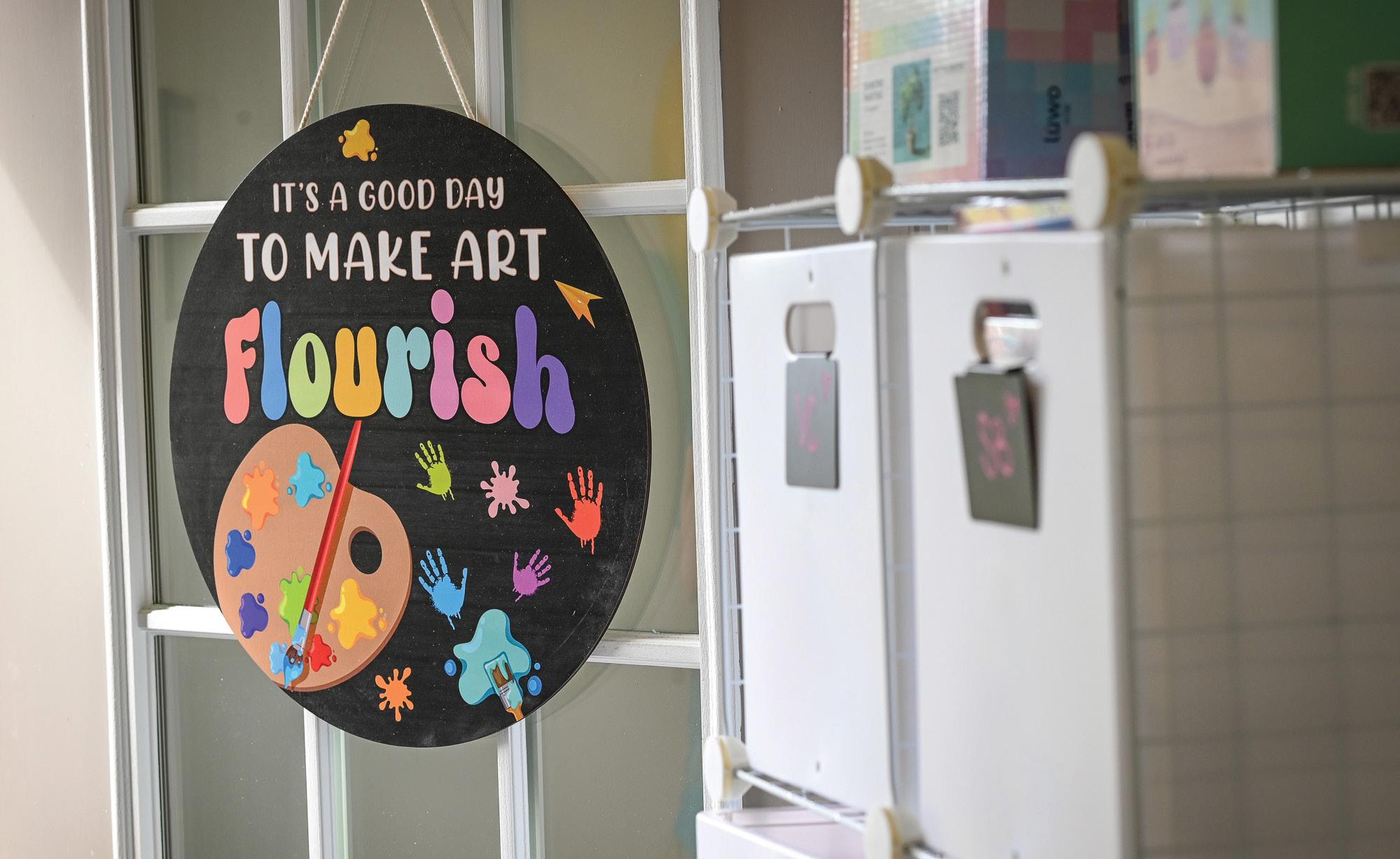
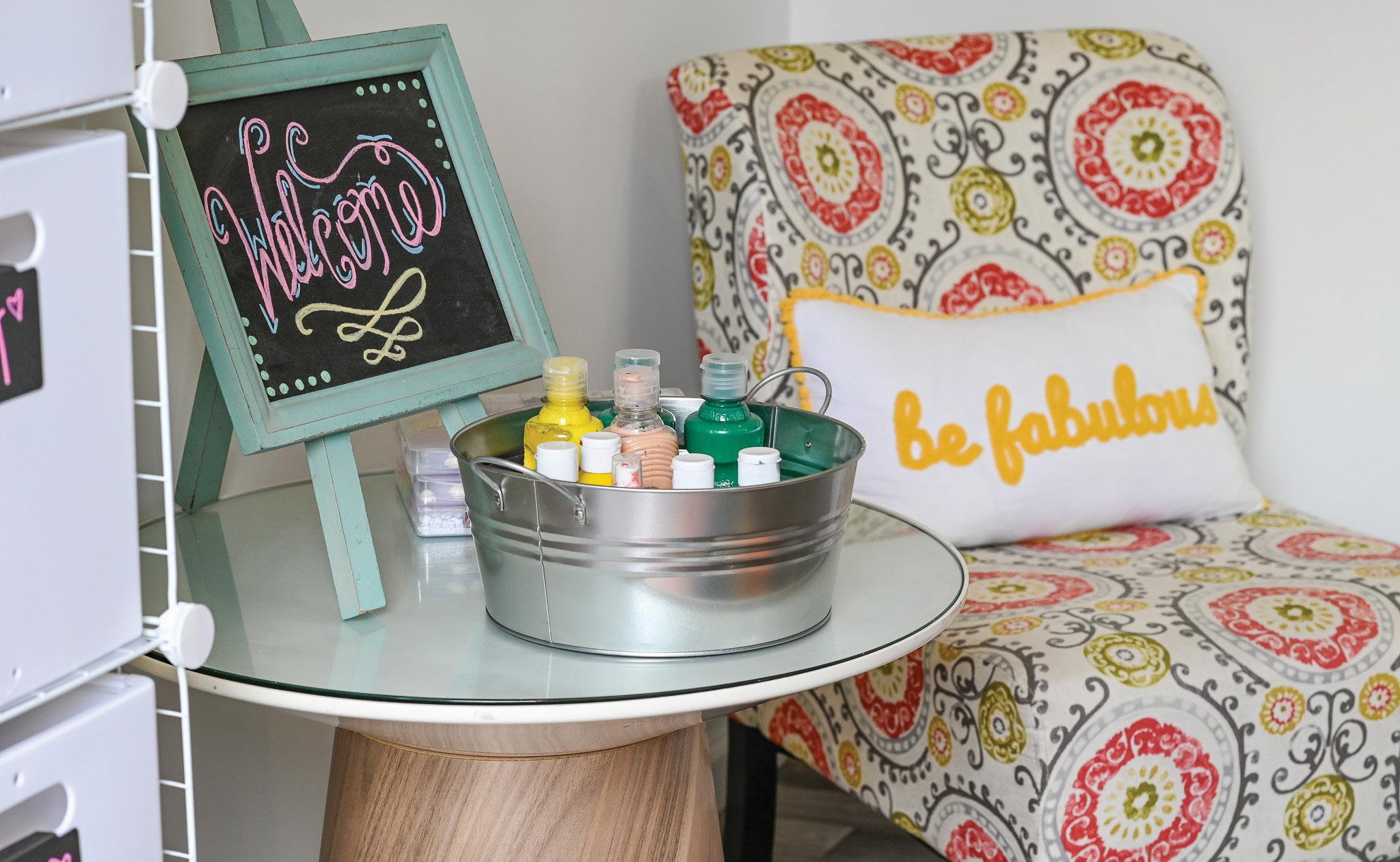
“We were able to use all the skills we teach when we build a full-scale home,” Kroner said. “It was a great t for what we do in our program. And we got to help another great community organization.”
roughout the spring months, students from the two Job Point programs worked together to build the twelve-byeight-foot Art Shed, giving the residents at Flourish’s Youth Shelter a new retreat and a place to call their own. e project was also supported by donations from the
Downtown Optimist Club and the Community Foundation of Central Missouri.
e Art Shed o cially opened on September 10.
“It’s just so exciting to see that this vision we had is nally here,” Stewart said. “Our residents really needed this space.”
While some supplies have already been donated by the Veterans United Foundation, additional planning is underway through another collaborative partnership with Access Arts. Sarah Catlin, Ac-
cess Arts executive director, said her organization is looking forward to helping design the space and, working with the youth in the house, coming up with recommendations for basic supplies.
e multi-collaborative project ts Job Point’s mission perfectly, said John Scalise, the organization’s president and CEO.
“We all have the same mission,” he said. “We want to help people who are struggling get from where they are today to where they really want to go.”
Taking care of your heart health has never been easier. With MU Health Care’s Love Your Heart Cardiac Screening, you can catch potential heart issues before they become a problem.
Three Essential Tests — One Easy Appointment — Just $120
• Calcium CT Scan: Detect early signs of heart disease
• Full Lipid Panel: Understand cholesterol levels and heart attack risk
• A1C Test: Assess diabetes risk, a key factor in heart health

My Love Your Heart Cardiac Screening caught early blockages before I had any symptoms. I’m grateful every day for taking that time to get checked. – Mary, 55

Follow Me
What does the journey of following Jesus really look like?
BY BETH BRAMSTEDT
Where have you heard the phrase “Follow me”? e most frequent place for me is when I’m at a restaurant. After the host asks how many are in my party, they say, “Follow me,” with the expectation the group will follow them to an available table. And with my mouth watering and stomach growling, I do!
I also hear it in crime dramas. When a police o cer or FBI agent is trying to get a witness or civilian to safety while under heavy gun re, they hunch down, look over their shoulder, motion with one hand, and say, “Stay close and follow me.”
In the biblical context, “follow me” refers to the words of Jesus. ey are his invitation to his disciples to follow him — not just in the moment, not just in a dangerous situation, but in all of life. Jesus o ers us the same invitation today.
For me, Jesus’ invitation came when I was a child. I grew up in church. I had parents who modeled love for each other and love for Jesus. Coming downstairs in the morning and seeing my dad’s Bible or prayer notebook open on the kitchen table spoke volumes to me about his relationship with Jesus. anks to my parents and my faithful Sunday school teachers, I made the decision to follow Jesus as a child, and I followed him as much as I could, in my childlike ways, with what I understood.
About ten years later, another invitation came: an invitation to join God in what he was doing. It was an invitation to know God more intimately, to recognize his voice, to understand his will for my life, and to make the commitment to trust him in that. is invitation came through the study “Experiencing God” with our young marrieds small group. Our group longed to know Jesus deeply for ourselves as adults.
When Jesus invites us to follow him, he is declaring that it is a person we follow. In

the Bible, Jesus mentions things we are to do, but it is always relational.
If we look at the story of Peter, we see how Jesus continues to invite him into relationship. Jesus gave Peter opportunities to recognize his voice and trust him with his life. A great picture of this invitation is in Matthew 14, when Jesus invites Peter to get out of the boat and walk on water. Jesus says, “Come,” and Peter responds … and walks on water until he takes his eyes o Jesus.
is story and others show us Jesus’ invitation to discipleship and Peter’s response, sometimes full of faith and sometimes full of fear. Jesus invites Peter to connect with him in intimate conversations and moments, to grow by listening and interacting with his teachings, to serve by ministering to the people, and to share his story with
the rest of the world. And when Peter fails, he also invites him to heal from the lies he believes about himself and about Jesus.
What can we learn from Peter’s life?
e journey of following Jesus is relational. e invitation is personal. Jesus invites Peter to follow him, and he is inviting us to follow him as well.
Tourism-related spending in FY24 amounted to more than $567 million in our hotels, restaurants, shops, event venues, and cultural spaces, supporting over 11,500 jobs.
What invitation is Jesus extending to you today?
One thing you can be sure of — you may forget the invitation or choose to take your eyes o Jesus, but he never takes his eyes o you.
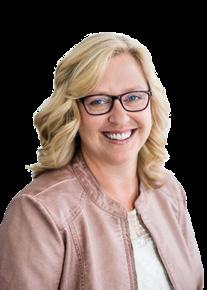
Beth Bramstedt is the Church Life Pastor at Christian Fellowship.
What Columbia Is Doing to Enhance Downtown Safety
BY BARBARA BUFFALOE
In recent weeks, I’ve received heartfelt messages from residents, students, and business owners worried about safety in our downtown. I want to start by saying this: I hear you, and I care deeply about the well-being of everyone who lives, works, and visits our city center.
Downtown Columbia has always been the heart of our community — it’s where we gather to celebrate, support local businesses, and welcome visitors from around the world. But like many growing college towns, we face complex challenges related to safety, housing, infrastructure, and mental health that require coordinated, sustained action.
at’s why the city is taking a comprehensive approach — combining law enforcement, prevention e orts, and partnerships — to keep downtown safe and vibrant.
Over the past year, the Columbia Police Department has increased its presence in the downtown corridor, strengthened collaboration with regional law enforcement, and expanded the use of technology like the National Integrated Ballistic Information Network (NIBIN) to help solve crimes more quickly.
On July 1, we added eight new o cers to patrol — a 12 percent increase from earlier in the year and nearly 20 percent more than in 2024. All were assigned to the night shift as part of a focused downtown safety initiative. As of September 19, o cers had made 332 proactive enforcement actions downtown on Friday and Saturday nights, showing that we’re taking people’s safety seriously.
At the same time, our o cers have been addressing quality-of-life concerns during the day shift, focusing on behavior-based violations that often lead to neighborhood con ict or unsafe conditions. ese e orts are part of a balanced strategy to ensure that everyone downtown, including our unhoused neighbors, is treated with fairness and respect while maintaining public safety.

Citywide, total crime is up about 9 percent from last year, but the main driver is an increase in “crimes against society” — like trespassing, liquor violations, and drug o enses — which rise when o cers are more proactive. In fact, arrests are up 31 percent compared to last summer, and patrol response times have improved nearly 20 percent, from 16 minutes 21 seconds to 13 minutes 36 seconds. ese are signs of a department that is not only rebuilding capacity, but also responding faster and more e ectively to community needs.
Public safety, however, is not just about enforcement. It’s also about prevention, partnership, and trust. at’s why we created the O ce of Violence Prevention (OVP), a trauma-informed, community-oriented system of care focused on addressing the root causes of violence and strengthening long-term community well-being.
e OVP brings together law enforcement, community-based organizations, and residents to prevent violence before it happens. Guided by data and evidence-based strategies, the OVP is implementing initiatives like Group Violence Intervention,
Cognitive Behavioral Training, and Neighborhood Opportunity and Community Accountability Proconsul (NOCAP), all of which are designed to reduce violent crime, engage youth, and improve trust across neighborhoods.
A safe downtown is a busy and beloved one — a place where people want to spend time. Every time you attend a concert at Rose Music Hall, have a co ee meeting at Uprise Bakery, or grab dinner at Sycamore, you’re helping to keep our downtown thriving.
Community safety and community vibrancy are two sides of the same coin. Both require consistent investment, strong partnerships, and an engaged public. Together, we can ensure that downtown Columbia remains a place we’re proud to call the heart of our community — safe, inclusive, and full of life.
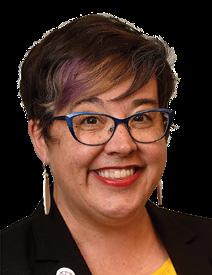
Bu aloe is currently serving her second term in o ce as the mayor of Columbia.
Barbara
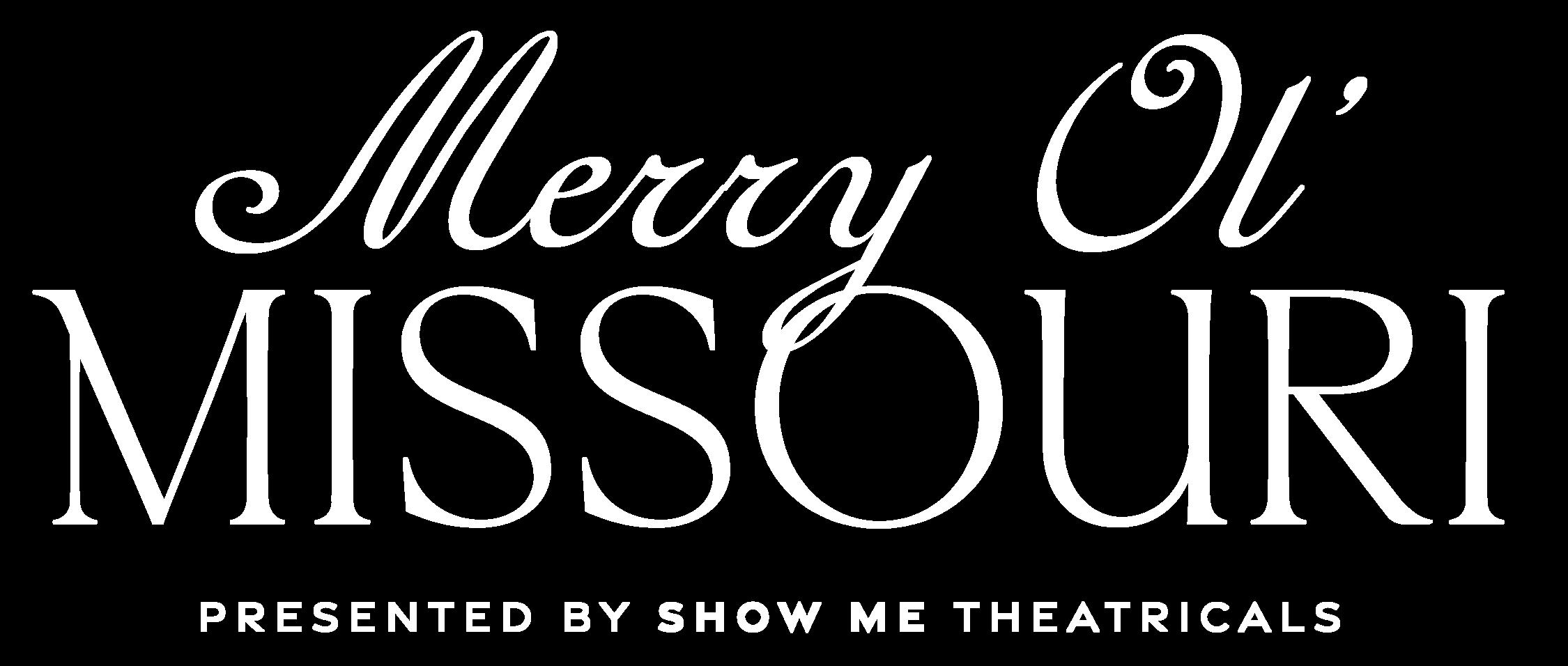













Bourbon Chocolate Pecan Pie
BY HOSS KOETTING


Alrighty, folks, the holiday season is o cially here. I know, I know … if you judge by store displays, it probably started two months ago. But let’s be real. November is a perfectly reasonable time to start thinking about anksgiving, Christmas, Hanukkah, Kwanzaa, Festivus, or whatever it is you celebrate.
Now, the tricky part: How do you plan the feast and avoid a political showdown at the dinner table? Honestly, I don’t have a magic solution for the latter — except maybe pouring yourself a generous glass of whatever liquid you prefer before anyone arrives.

When it comes to the food, however, you are in the driver’s seat. Stick mostly to dishes you know and love, but feel free to throw in one adventurous recipe just for fun. And don’t try to do it all yourself. Ask your friends or family to bring an appetizer, a side, or even that quirky casserole Aunt Carol swears is amazing. Make a prep list and note what needs to be done, how long it’ll take, and when you’ll tackle each task. Give yourself a little breathing room, too, because let’s be honest, minor kitchen mishaps are basically guaranteed.
Shop early and grab all your ingredients before the big day. Don’t forget the wine. Pinot Noirs and Gewürztraminers are great pairings when turkey is involved. When the day comes, get an early start. Set up your mise en place, everything at your ngertips, with your ingredients out, knives sharpened, and gadgets ready to go. Keep your workspace clean, keep your demeanor calm, and have some fun as you prepare your celebration. Before guests arrive, put out some light snacks and don’t hesitate to open a bottle of wine to jump-start the merriment. Now, for the showstopper: dessert.
Here is a treat that should be a hit at any get-together. If you are feeling brave, make the crust from scratch. If not, a frozen or refrigerated crust works just ne — just keep it cold so it stays aky. And of course, make sure there’s plenty of bourbon for the chef.
CRUST INGREDIENTS
• 1¼ cups all-purpose our
• 2 tsp. sugar
• ¼ tsp. salt
• 4 oz. (1 stick) cold butter, cut into pieces
• ¼ cup ice water
FILLING INGREDIENTS
• 2 cups pecan pieces or halves
• 3 large eggs
• ¾ cup dark brown sugar
• ⅔ cup light corn syrup
• 2 tsp. pure vanilla extract
• 2 Tbsp. melted butter
• 2 Tbsp. bourbon
• ¾ to 1 cup dark chocolate chips
DIRECTIONS
1. Preheat the oven to 375 degrees.
For the crust:
1. Mix the our with the sugar and salt.
2. In a food processor or with a pastry blender, mix the butter with the our until the mixture resembles coarse meal, then add the ice water.
3. Knead the mixture until it sticks together, then wrap it in plastic wrap and refrigerate at least 30 minutes.
For the lling:
1. Toast the pecans lightly in a small skillet and set aside, reserving some of the larger pieces for the top.
2. In a bowl, mix the rest of the ingredients except the chocolate chips together; add the pecans and chocolate chips.
To assemble:
1. Roll out the crust so it will cover a 9-inch greased pie plate. Place in the pie plate, decoratively crimping the edges.

Jim “Hoss” Koetting is a retired restaurateur/chef who enjoys gardening, good food, good bourbon, and good friends.
2. Pour the lling into the crust and place the reserved large pecan pieces carefully on top.
3. Bake for 45 minutes to 1 hour until the center is set. If the crust is getting too brown, tent it with foil. Let pie cool for at least an hour.
With John LaRocca AT THE
BY KELSEY WINKELJOHN
PHOTOS PROVIDED BY JOHN L A ROCCA
At the heart of every kitchen is a ame — bright, restless, and enduring. In Columbia’s food and beverage industry, that ame is passionate Missourian John LaRocca.
Over the decades, LaRocca’s career has spanned family-owned restaurants, corporate hotel chains, private clubs, and higher education. But it all started when he was just nine years old, washing dishes in his father’s restaurant.
“My dad owned a couple of Italian restaurants in St. Louis, so I started with washing dishes and kind of worked my way up. I did a little bit of everything,” says LaRocca. “In high school, I realized I was pretty good at it, and I was always having a great meal, so I pursued the hospitality industry.”
LaRocca, who had been studying at the University of Missouri–St. Louis, moved to Columbia, where he studied hospitality management at the University of Missouri while his newlywed wife pursued a nursing degree. Shortly after her graduation, LaRocca accepted a position with Marriott Hotels in St. Louis. He describes this as the turning point when his career began to take o , leading to seventeen years with Marriott and frequent relocations across the country.

“ is was back in the ’80s and ’90s, and back then, [transferring] was how you were able to get promoted,” LaRocca explained. “Each time I transferred, I would see if I could take on additional responsibilities that would make me more valuable to the company. Eventually, I got pretty well-rounded in the food and beverage world.”
ree daughters later, while living in Washington, D.C., LaRocca realized it was time to return to his stomping grounds in St. Louis so his children could spend more time with their grandparents. For seven years, the family stayed rooted while he advanced in his career at a St. Louis hotel and a private country club. But his career carried a momentum that made it hard to stay in one place for long.
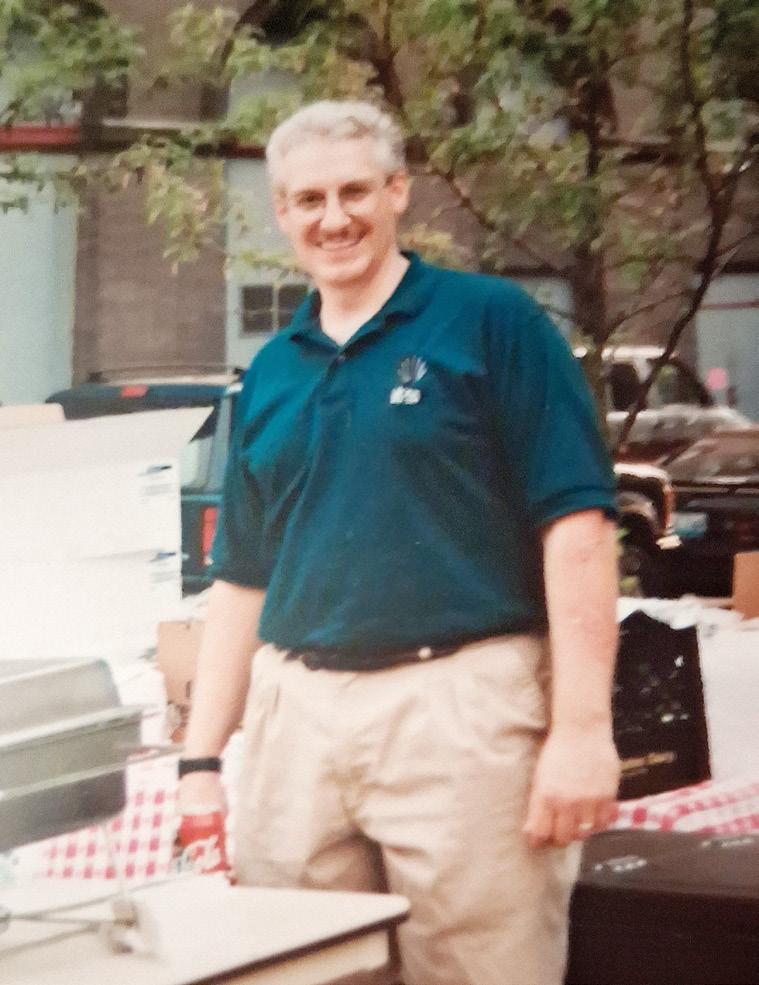
TABLE

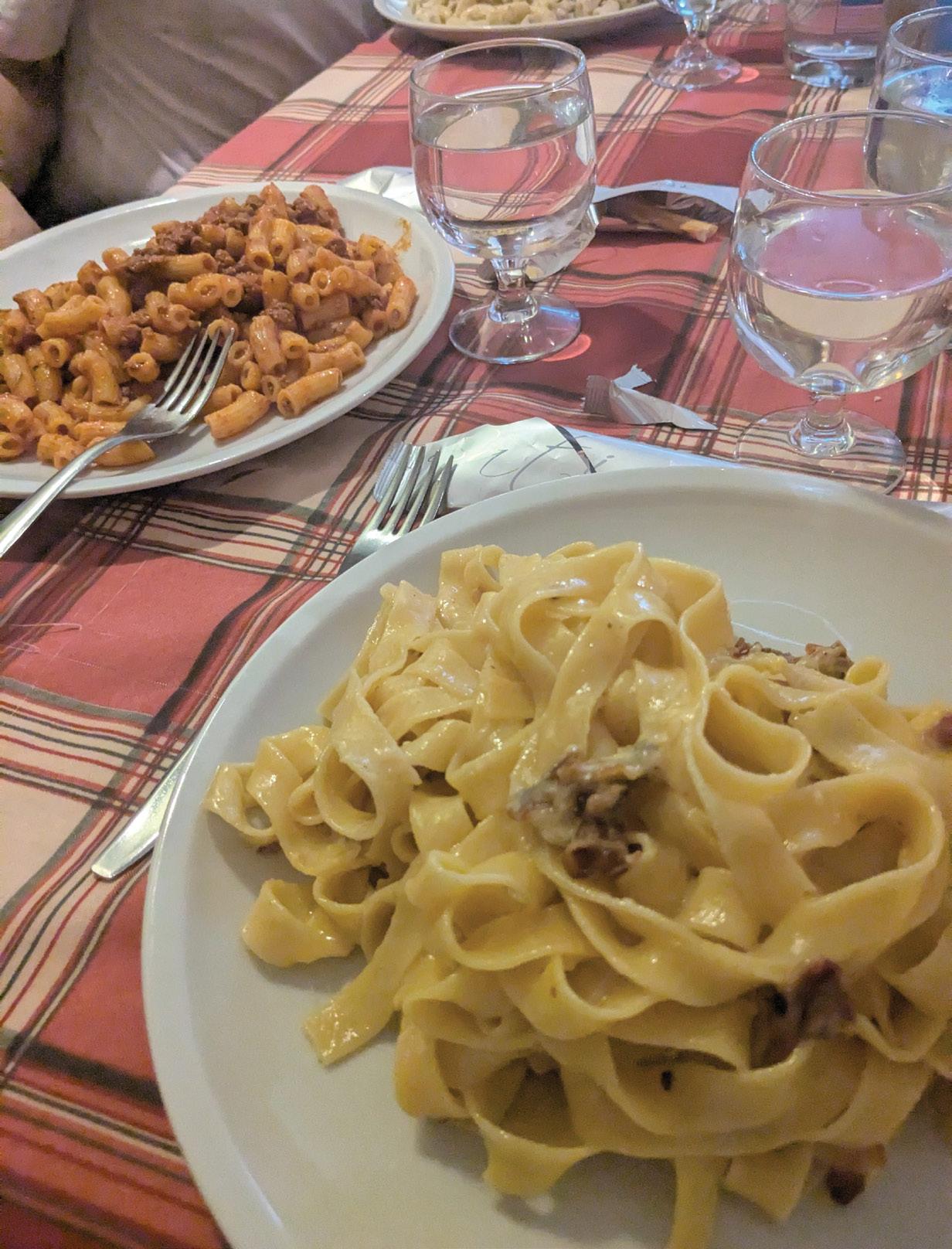
“I got a phone call from a headhunter who was looking for someone at the University Club in Columbia,” he says with a grin. “I told him, ‘I don’t know anybody, and I’m not interested. St. Louis is our home, and we really don’t want to leave again.’ But he was persistent. And I did a little research and realized it was a cool opportunity.”
For ten years, LaRocca served as general manager at the University Club — a position that o ered continual learning opportunities and demanded several

responsibilities with the primary objective of leading a team of professionals in running the University Club’s dining room, banquets, and University Catering.
During his tenure, he also invested in the next generation of hospitality leaders. Partnering with the College of Agriculture, Food and Natural Resources (CAFNR), MU’s Hospitality Management Program, and the University Club, LaRocca oversaw a year-long internship that immersed students in every department — culinary, catering, banquets,
sales, event planning, and dining room — before allowing them to specialize. Interns gained rsthand experience serving groups ranging from a handful of guests to 3,000 people at events like tailgates and brunches.
“I’ve always believed in giving back to my industry,” says LaRocca, regarding working with passionate students.
It was no surprise that, when LaRocca “retired” in 2017, he assumed a role as president of the Missouri Restaurant Association (MRA). Already active as a
EAT LIKE L a ROCCA
• Pork Belly Bun at Le Bao Asian Eatery
• Sin City Sushi Roll and Jina’s Balls at Jina Yoo’s
• Reuben sandwich at The Heidelberg
• Lasagna at Pasta La Fata
• Whatever Chef Adam Wells-Morgan recommends at Flyover
Other Go-Tos
• Sycamore
• Tellers
• 44 Canteen
• Irene’s
• Sparky’s
WORDS HE LIVES BY
“You’re only as good as your last meal service.”
ALWAYS CRAVING
Italian and Mediterranean
SECRET INGREDIENT FOR SUCCESS
For restaurants: Creativity and innovation
For himself: A super supportive wife
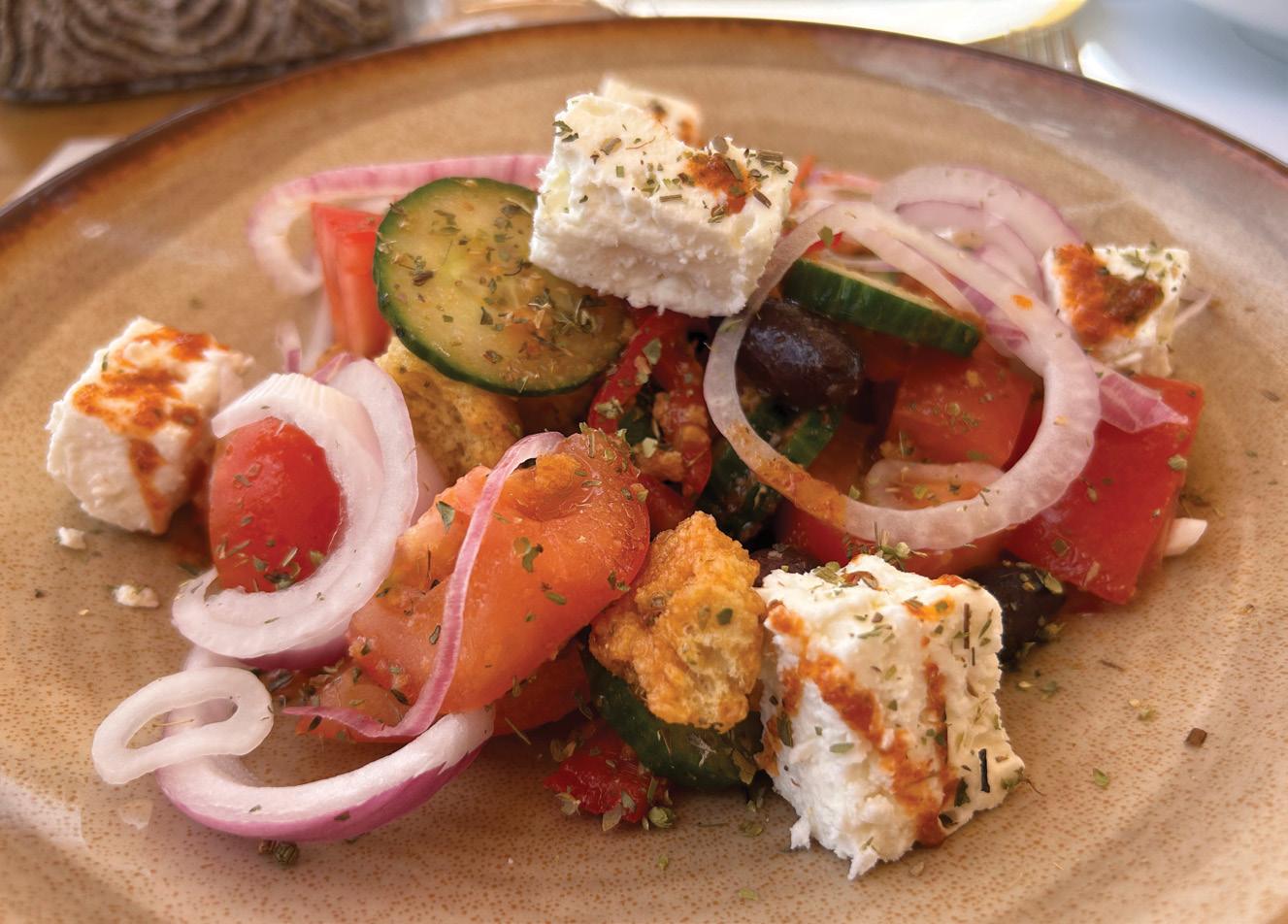
volunteer and vice president, he was a natural t, particularly given his passion for education. At MRA, he supported ProStart, a two-year nationwide high school culinary program that teaches teens the ins and outs of the food service industry.
e Missouri ProStart program has approximately 6,000 enrolled students — the third-highest enrollment in the country — and LaRocca emphasizes its mission of getting people interested in and involved in the hospitality industry at a younger age. It also often provides a clear pathway for high school students to secure stable employment immediately after graduation, without the need to pursue higher education.
“ ere are kids who have trouble nding their way, but when they get into the hospitality industry — for a lot of them anyway — it just clicks for them.
ey nd their little niche. ey learn teamwork. ey learn people skills. ey learn showing up on time and covering their partner’s back, and how to do things that they would’ve never dreamt of.”
LaRocca has yet to fully retire and is still taking on a number of projects after hanging up his apron on the ProStart program after seven years. Now, he serves as a food and beverage consultant, helping owners of wineries, brew pubs, and restaurants, as well as their investors, maximize pro ts through high-quality food, beverages, and service.
“Since retiring from the University Club, I started having people contact me with their restaurant or event center issues, asking me to come take a look. So I started a company, and I still do some consulting — though I am somewhat particular now and take jobs that t into my lifestyle.”
ough he currently lives in St. Louis, he maintains close ties to Columbia by hosting COMO Magazine’s monthly gourmet newsletter, e Dish, and supporting scholarship fundraisers with groups such as the Mizzou Hospitality Management Program.
“Next year, [for our fundraiser trip] we’re going to do a food and wine tour in France, traveling through Bordeaux, Burgundy, and Paris,” LaRocca says. “I love those fundraising trips and leading groups through di erent areas, discussing, for example, the culture or how Missouri wines were instrumental in keeping the wine industry in Europe going several years ago.”
With a laugh, LaRocca admits he “really sucks” at retirement. But that’s only because the passion that’s guided him since he was nine refuses to burn out. Plus — good wine, good food, and good people? Who could walk away from that?

(Re)Discover COMO




(Re)Discover COMO is a monthly feature sponsored by the Columbia Convention and Visitors Bureau highlighting places, events, and historical connections that new residents and visitors can discover, and not-so-newcomers and long-time residents can ... rediscover.
Tellers Gallery and Bar
Tellers has been compared to the bar in one of television’s most beloved comedy series. e downtown Columbia restaurant and bar, which opened in 1998, certainly has its own Cheers-like ambience.
e long-standing establishment at 820 E. Broadway combines a restaurant/bar with a local art gallery. A popular spot for happy hour and cocktails, Tellers has a diverse menu as well. It also has a history of resilience, whether it’s navigating the topsy-turvy COVID pandemic or rebounding from a major re in September 2023 that caused significant damage. Tellers underwent substantial repairs and reopened in November 2024. ere’s always something going on at the corner of Ninth and Broadway, making Tellers the perfect place for top-notch food and palate-pleasing drinks, which can be enjoyed in its vibrant interior or outdoors on the sidewalk amid the hustle and bustle of downtown.
John William “Blind” Boone Home
Perhaps Columbia’s most famous and in uential musician, John William “Blind” Boone was born during the Civil War. He survived and thrived against the odds — poverty, disability, and racism — to become a nationally known composer and musician. Blind almost from birth, the musical prodigy created music using his knowledge of classical music, Negro spirituals, and the syncopated or “ragged” rhythms he heard in his everyday life. His music has in uenced many later generations. Boone’s home at 10 N. Fourth St. in Columbia is on the National Register of Historic Places and is being restored through the e orts of the John William “Blind” Boone Heritage Foundation. e home was described as a rare surviving home of an extremely signi cant 19th and early 20th century Black musician. Boone’s Chickering piano can be seen at the Boone County History & Culture Center at 3801 Ponderosa Street in Columbia. e Victorian-era home, built between 1888 and 1892, is a rare sight in downtown Columbia. A prominent feature of the home is a bronze sculpture by renowned artist Harry Weber that beautifully captures the musical passion of “Blind” Boone performing on his Chickering grand piano.
State Historical Society of Missouri
e State Historical Society of Missouri (SHSMO) Center for Missouri Studies at 605 Elm St. is a stately, 76,700-square-foot building bordering the University of MissouriColumbia campus and the eastern edge of downtown Columbia’s Flat Branch area. e $35 million building opened in 2019. Among the center’s most impressive collections is its trove of state newspapers, preserved via micro lm and digitization. SHSMO was founded in 1898 for that preservation purpose — though today’s preservation techniques were many decades away — by the Missouri Press Association, and it has been supported by state funding since 1901. e state newspapers collection begins with the July 26, 1808, issue of the St. Louis Missouri Gazette and now includes more than 72 million pages preserved on some 58,000 reels of micro lm.
SHSMO’s holdings also include unique manuscript collections, thousands of editorial cartoons that are national in scope, rare and specialized books, thousands of maps and photographic images, recorded oral histories, and an extensive art collection that includes major works by George Caleb Bingham and omas Hart Benton.
In addition to caring for collections and working to provide easier access to records, SHSMO o ers programs, lectures, and workshops as well as tours for school and community groups and in-depth orientation for secondary and university students conducting research.
2025 COMO Gift Guide Holiday
Presented by

This holiday season, COMO Magazine and The COMO 411 have joined forces to create the ultimate Holiday Gift Guide — a curated celebration of local shopping, standout gift ideas, and festive inspiration that brings Columbia’s vibrant business community front and center. This beautifully crafted guide connects readers with local brands and businesses just in time for the season of giving.
In partnership with:




The printed guide is included with your copy of the November issue of COMO Magazine. Scan this to access the digital issue.



Presented
CaneCandy Crib at BrewingLogboat Co.
Photo by Karl Bussen






Fifty Years of Connecting With Nature
BY JODIE JACKSON JR | PHOTOS BY LANA EKLUND
Geico has a gecko. AFLAC has a duck. Liberty Mutual has an emu. But topping them all is Shelter Insurance Company, which has a veacre botanical garden, located at its corporate campus at 1917 West Broadway in Columbia. More than a thousand
people attended Shelter Gardens’ grand opening in August 1975, and it has now hosted countless picnics, orchestral concerts, weddings, school eld trips, and university research visits, as well as serving as a de rigueur backdrop for prom photos and senior pictures.
Shelter Gardens is open every day between 8 a.m. and dusk, except Christmas and on days with inclement weather, and it is completely free to the public. It is usually found high on the list of “must-see” attractions in local and regional visitor guides.


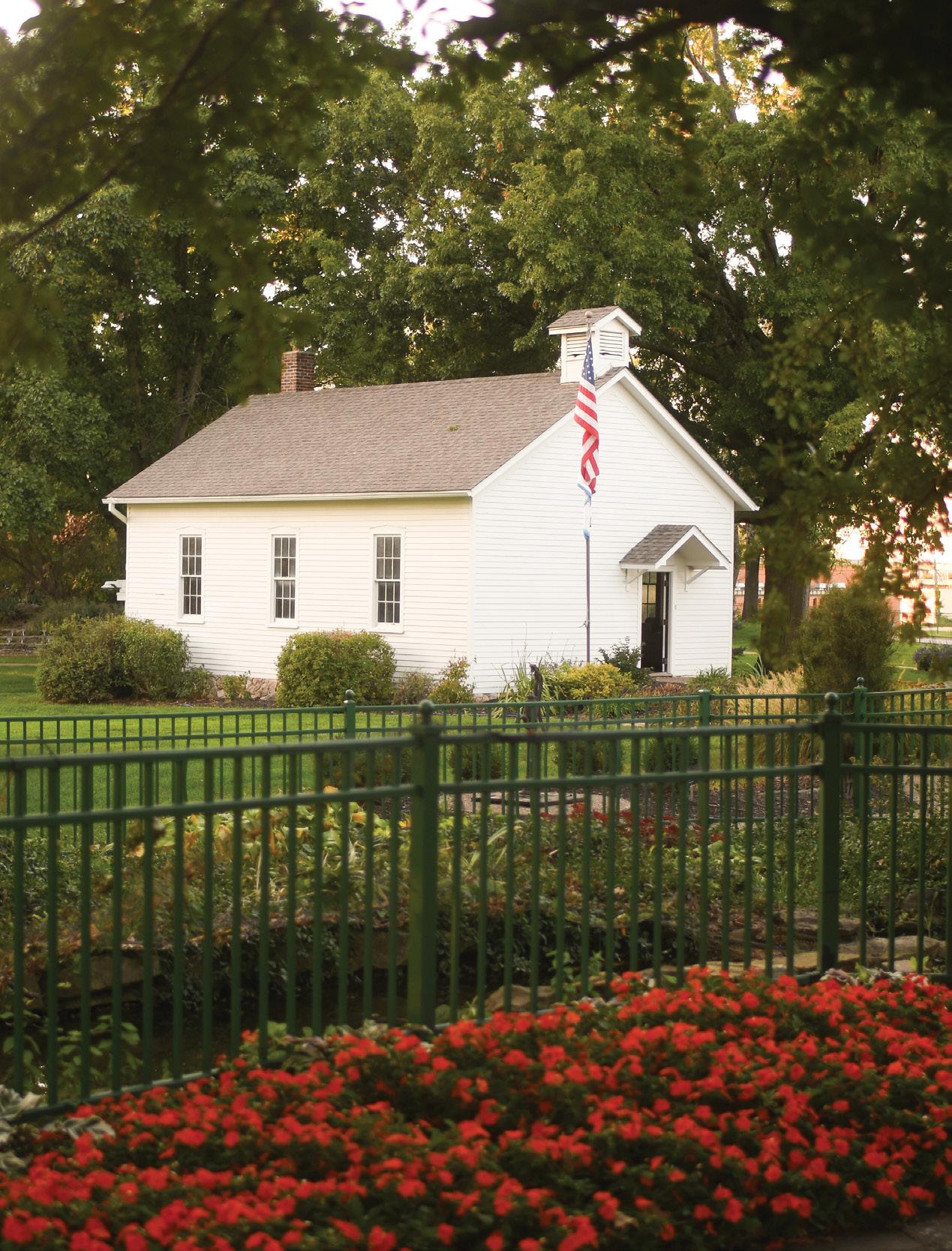




Today, a stone and wrought iron fence surrounds the ve-acre garden, which contains more than 300 varieties of trees and shrubs and more than 15,000 annuals and perennials. Every variety of plant life in the gardens features a marker displaying botanical information for the species, including its scienti c and common names.
Shelter Gardens contains fourteen features, among them a waterfall, rock


garden, Vietnam veterans memorial, replica 19th-century schoolhouse, a gazebo for concerts, and various themed areas, including a desert landscape and a Japanese maple garden. e one-room schoolhouse is based on the Newcomer School, where the company that later became Shelter Insurance was founded in 1914 by seven farmers in Brunswick, Missouri. ( e insurance company started in 1946 as an o shoot of the farm club.)
According to the company’s website, the garden was the idea of Scotty Garrett, a Shelter employee. Garrett, who had been a groundskeeper in Scotland before moving to Missouri, had a vision of turning the former 56-acre farm into a tree- and ower- lled oasis for the whole city to enjoy. Fifty years later, Columbia’s residents and visitors are the lucky beneciaries of that vision.

















































Secure your legacy
Create a lasting legacy with tax efficiency through strategic charitable giving.
Commerce Trust can help to ensure your assets are strategically allocated to minimize tax liabilities while protecting what you pass on to your philanthropic beneficiaries.
Our tailored approach ensures we can assess how different charitable giving strategies may benefit your situation, including donating directly, contributing to a donor-advised fund, establishing a private foundation, and making qualified charitable distributions.
Our holistic, team-based approach to servicing clients means your team of estate and tax planning, investment management, and trust administration professionals will work collaboratively with your estate attorney and tax advisor to craft a plan tailored to your personal and family goals.
Let us assist you with navigating the complexities and opportunities of strategic charitable giving and estate planning. Contact Lyle Johnson, your dedicated Market Executive for Commerce Trust, at (573) 886-5324 or lyle.johnson@commercebank.com to secure your legacy.



























WHAT THE HOME PROS KNOW
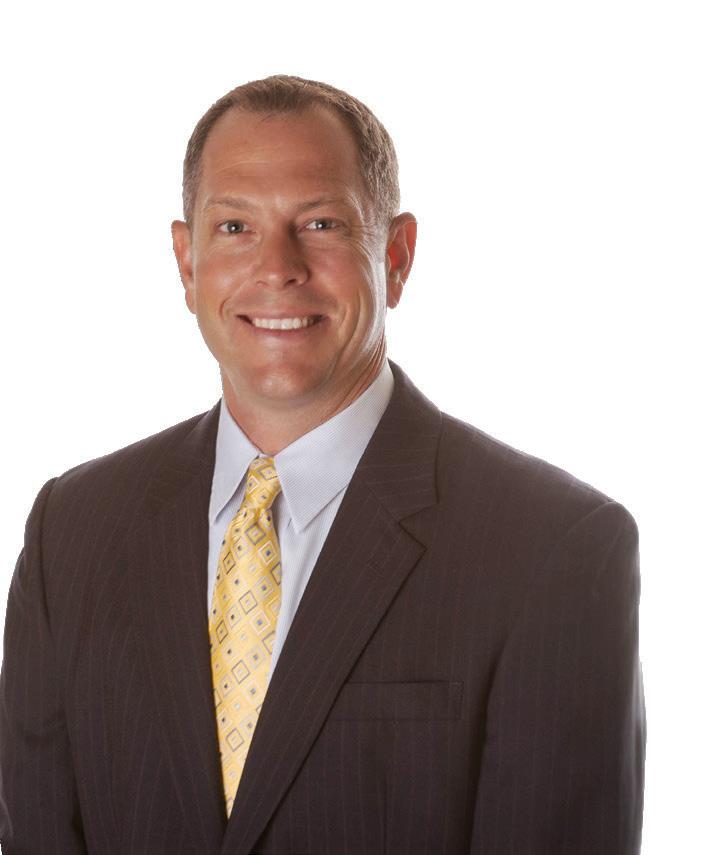
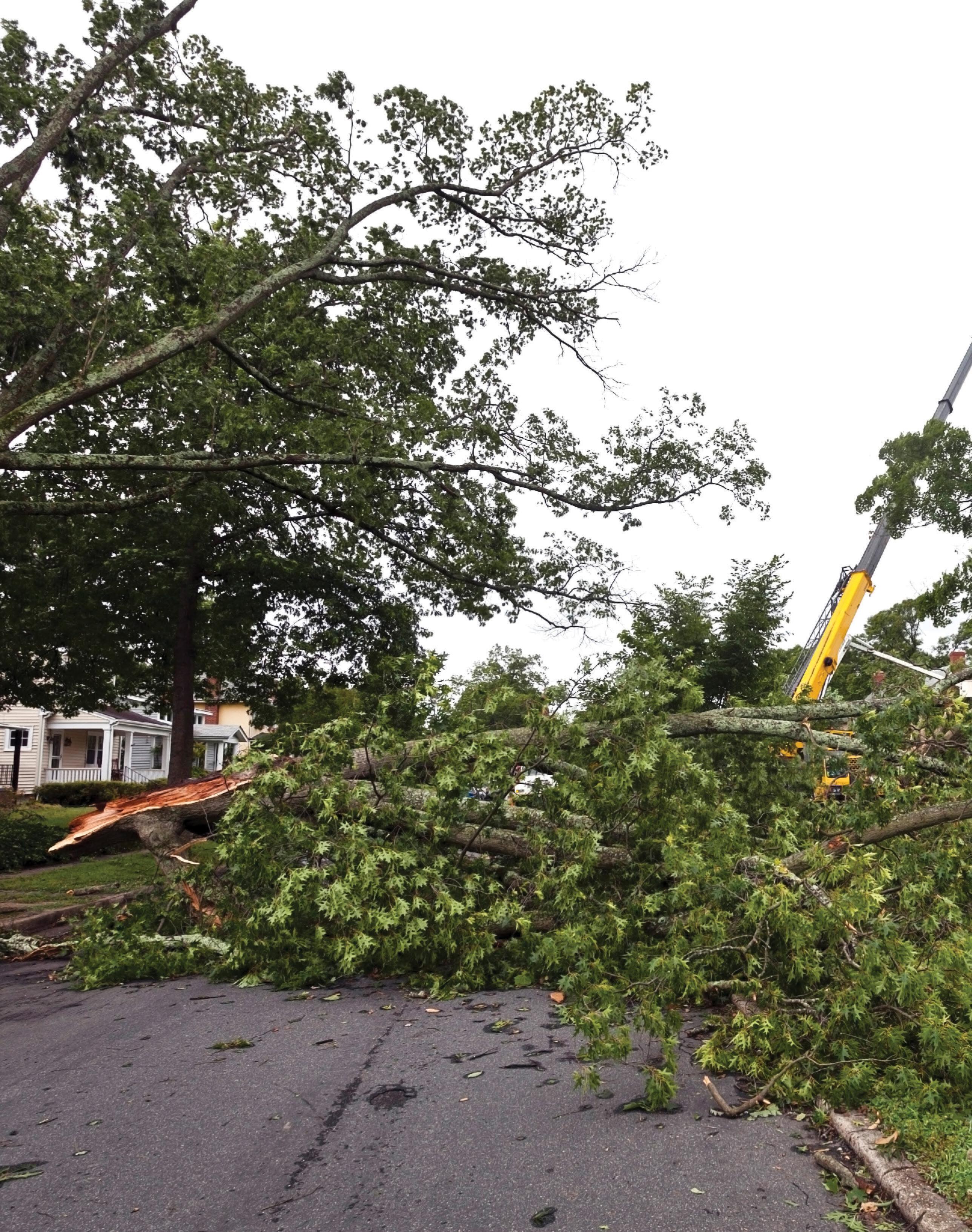

INSURANCE IS A BEACON OF HOPE FOR COMMUNITIES AFTER THE STORM
By Mike Messer MMesser@ShelterInsurance.com
When disaster strikes—whether it’s a tornado sweeping through neighborhoods and towns, hail pounding rooftops and cars, or high wind speeds uprooting trees and damaging homes—insurance becomes a lifeline for individuals and communities. During times like these, the support from insurance companies benefits the community in many ways. Claim specialists mobilize rapidly so families can begin repairs on their cars or homes, which helps local economies rebound, maintain continuity and transform adversity into opportunity for growth and renewal.
How Shelter Assists in Times of Community Crisis
The year 2023 was certainly a challenge for Shelter’s employees, agents and policyholders unlike anything seen in recent history. Our customers experienced thirteen catastrophe level storms leading to record numbers of claims – a historical series of devastating events hopefully never to be repeated. Shelter responded to almost 82,000 weather-related claims and helped our policyholders recover from multiple tornadoes, straight-line winds and large hailstorms in our operating territory. By comparison, during the previous five years, Shelter experienced an average of 52,000 weather losses per year, making the 2023 results significantly above average. Despite this record-breaking devastation, Shelter delivered on the
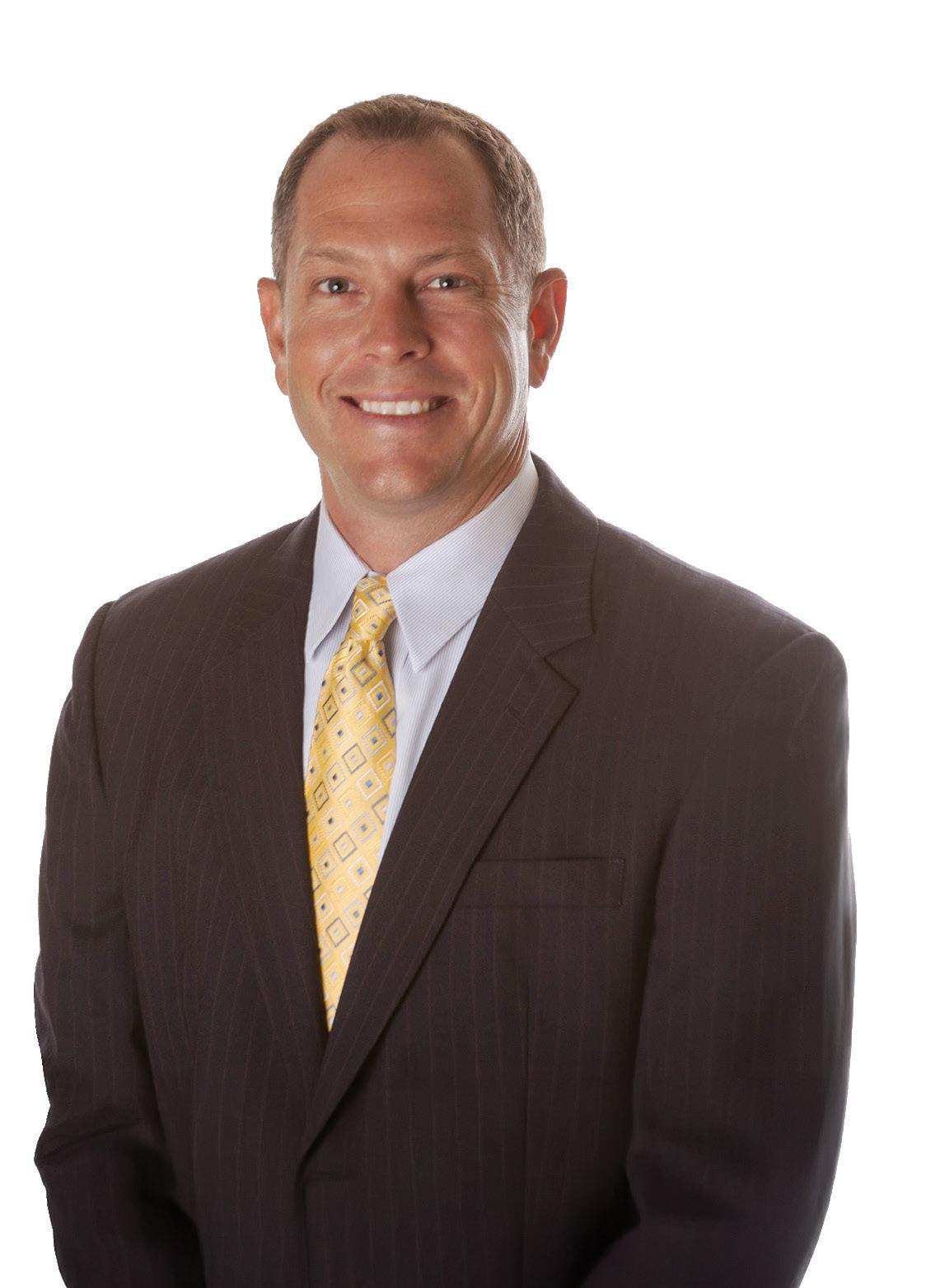
core promise made to policyholders in many ways, including dealing with and overcoming the impact of multiple catastrophic storms.
The Claims leadership team took additional measures to continue the exceptional service Shelter is known for during challenging times. “Catastrophe Response Teams,” the first responders during an event, worked multiple rotations throughout the year across Shelter’s operating territory. Additional Claims employees and staff from other departments in the company worked together to deliver on our policy promises.
WHAT THE HOME PROS KNOW
MIKE MESSER AIC, LUTCFSHELTER INSURANCE ® ®
With over two decades in the insurance industry, Mike Messer has served as a claims adjuster, supervisor, and underwriter, giving him a well-rounded understanding of how policies work when it matters most — before and after a loss. He prioritizes building relationships based on trust and personalized service, recognizing that every client’s needs are unique. Through annual policy reviews, he helps ensure clients stay informed, confident, and properly covered, providing them with peace of mind and financial security.

and claims team, we have repeatedly proven Shelter will overcome these challenges and help our customers get back on their feet.
Severe weather events can cause extensive damage to our customers' homes and significantly impact their lives. Thanks to the dedication of our employees, agents
Shelter Insurance® has weathered difficult financial times, devastating storms and many challenges every company faces. We're working on innovative ways to improve what we do for our customers. That's what we mean when we say "We’re your Shield. We’re your Shelter."

HOW TO USE COLUMNAR PLANTS IN LANDSCAPING: A GUIDE FOR HOMEOWNERS
By Nate Anderson
When designing residential landscapes, one of the most underutilized but incredibly impactful plant form is the columnar shaped plant. Columnar shaped plants are defined by their narrow and upright habit. Many of the types of plants that you already know and love come in columnar varieties – both trees and shrubs. This shape is ideal for homeowners with limited space or a desire for structure and vertical interest. Whether you have a small city garden, a suburban backyard, or a sprawling estate, columnar plants can bring elegance, privacy, and functionality to your outdoor space.
What Are Columnar Plants?
Columnar plants are varieties specifically bred or selected for their tall, narrow growth habit. Unlike bushy or spreading types, they grow vertically with minimal outward spread, making them perfect for tight spaces or areas where you want height without width. Common examples include ‘Sky Pencil’ holly, columnar boxwood, ‘Emerald Green’ arborvitae, and even deciduous trees like the columnar hornbeam, oak, or sweetgum.

Why Use Columnar Plants?
As a landscape designer, I often recommend columnar plants for three main reasons:
1. Space Efficiency: In narrow side yards or anywhere that space is an issue, vertical plants provide greenery without crowding the area.

2. Architectural Structure: These plants offer strong vertical lines that bring order and rhythm to a garden, similar to architectural columns. It’s like adding an exclamation point to the landscape.
3. Privacy and Screening: Tall and narrow plants can form excellent privacy screens or windbreaks without taking up too much ground space.
Design Ideas Using Columnar Plants
• Create a Living Fence: Instead of installing a traditional fence, consider a row of columnar evergreens like ‘Emerald Green’ arborvitae. These can grow 10-15 feet tall or more and stay compact, offering year-round privacy and greenery.

Nate Anderson has been a resident of Columbia for seven years, and he has been working in the landscape industry for just as long. Nate is a designer and estimator for Rost Inc. While working on his degree in plant science and landscape design, he also worked as a foreman at Rost Landscaping, where he oversaw landscape construction projects. He credits much of his inspiration to his “early years” where he got to be a part of the construction of many beautiful landscapes.
• Frame Entryways and Pathways: Planting columnar shrubs or trees on either side of a walkway, driveway, or front door adds symmetry and formality. For example, two upright boxwoods flanking your entry can give your home a grander appearance and draw the eye to the front door.
• Add Height to Low Plantings: In a garden with mostly low-growing plants, strategically placed columnar plants can break up the monotony and add dimension. Use them like vertical punctuation marks to draw the eye upward and give the garden a dynamic feel.
• Define Outdoor Rooms: Tall, narrow plants can help define outdoor living spaces. For example, placing columnar tree around a patio can create the illusion of a walled garden or an open-air room without actually constructing walls.
Final Thoughts
Columnar plants are a powerful design tool for homeowners looking to make the most of their landscape. Whether you’re aiming for elegance, privacy, or simply trying to squeeze greenery into a small space, these can provide a beautiful and functional solution.
Stand & Deliver
Columbia keynote speakers capture audiences worldwide.
BY MICHELLE TERHUNE
“GLOSSOPHOBIA.” at’s the term for the fear of public speaking. Most people probably aren’t familiar with the word, but statistics indicate that a whopping 75 percent of them su er from the phobia. Not even the opportunity to picture an audience naked will entice them to the dais.
But there are a lot of people who make a living by miking up to speak on a variety of topics to audiences that range in size anywhere from single digits to the thousands. In fact, there are four Columbians whose keynotes take them around town and the world.
Kim Becking, Alex Demczak, John Hall, and Brandi Spurling all got to the stage in di erent ways, with unique messages and distinct speaking styles. Every time they get up to say something, though, they leave a little bit of Columbia wherever they are in the world.
KIM BECKING
Kim Becking calls herself a “recovering attorney” who worked in large practices, moved into government, and later ran a successful public a airs and communications rm. But none of those jobs led to her speaking career.
Diagnosed with breast cancer at 30, Becking and three other young women wrote the best-selling Nordies at Noon, where they shared their stories about having breast cancer at a young age.

Soon, they were being asked to talk to media and audiences.
“At the time, I didn’t even know professional speaking was a career,” Becking says. “I thought I was simply sharing my story to help others. But then event organizers started asking me what my fee was, and I remember thinking, ‘Wait, you can actually make a living doing this?’ at was the beginning of a journey I didn’t see coming.”
After speaking part-time, Becking decided to turn her passion for helping leaders and teams nd resilience in the face of an ever-changing world into a
full-time gig. e Unstoppable Momentum movement was born.
Becking speaks at fty to sixty events a year, plus conducts coaching and workshops. Moreover, she has received the Certi ed Speaking Professional designation held by fewer than 17 percent of pros worldwide.
“For me, it’s not about the letters after my name,” Becking says. “It’s about what they represent: years of consistent excellence, service, and impact. Because in the end, success isn’t applause in the moment. It’s knowing that something you’ve shared continues to ripple


forward — changing how people lead, how teams work, and how organizations thrive. at’s transformation. And that’s the legacy I care about.”
Becking says shifting her focus from herself to what her audience needs that day keeps her from getting nervous before she speaks.
“Over the years, I’ve developed a ritual that grounds me every time. Before I step on stage, I put my hand on my heart, close my eyes, and ask myself: ‘What do they need right now?’”
If they need unstoppable momentum, her audience is in luck.
ALEX DEMCZAK
While playing quarterback for the Tigers, Alex Demczak took a public speaking class at Mizzou and actually enjoyed the experience. After publishing his rst book, rive U, he talked about the book locally. at was the beginning of the speaking part of his career. “Speaking leads to more speaking,” he says.
He did public speaking as a side gig while working at Veterans United Home Loans before launching full-time as a speaker and founding ShareYourStory.com. Although he took on fty speaking engagements one year, he averages about twenty now.
“Early on, I said yes to everything without considering whether it was the right t,” Demczak says. “Over time, I’ve learned the importance of being selective — choosing engagements where I can make the most impact while also protecting my family and business priorities.”
Leadership, teamwork, integrity, culture, ethics, and sales are some of the topics he addresses for clients ranging from local organizations to the U.S. Space Force. For him, no audience is too small.
“My smallest audience was one kid,” Demczak notes. “I believe if you aren’t willing to show up for one person, you can’t expect the bigger stages. My biggest audiences have been school assemblies and large conferences, but I always try to keep the mindset of impacting people one at a time.”
Demczak says travel is the most challenging part of his speaking career because it takes him away from his family. But he admits to loving the chance to take the stage in Florida when it’s cold in Columbia. Wherever he speaks, however, his goal is the same.
“I’m passionate about helping leaders and organizations build trust, lead with integrity, and share their stories,” Demczak says. “At the end of the day, I want people to walk away from my talks not just inspired, but equipped with something they can apply immediately.”
JOHN HALL
John Hall has been a public speaker for about a decade, but he still gets nervous before he walks on stage. Early on, he would have a cocktail to calm his nerves. But after Ice-T made a joke about that method at a morning engagement at MIT, Hall stopped.
“Now, I call my wife, business partner, or a close friend before speaking. Talking to someone who grounds me is way better than a cocktail at 9 a.m.,” he says.
Like Becking, Hall is a serial entrepreneur. He co-founded the time management app Calendar.com and was one of Gabb Wireless’s early investors. He co-founded and advises two Columbiabased marketing agencies with nationwide client lists, Relevance and Adogy. In addition, he’s a regular contributor to Forbes, Fast Company, and Inc.
It was the publication of his best-selling book, Top of Mind, though, that ignited his speaking career. After his LinkedIn newsletter became one of the
most followed in the country, it really blasted o .
“Biggest lesson overall? It’s not about me. It’s about helping the organizer and their audience succeed,” he says.
Hall thrives on his link with audiences while on and o the stage.
“I make it a point to be approachable,” he notes. “I’ll show up early, stay late, hang with people in the crowd. I don’t want to be the ‘ y-in- y-out’ speaker with an ego. I want people to walk away feeling like they actually connected with me.”
Hall has had o ces in Salt Lake City, New York City, and Palo Alto, but he believes Columbia provides a great base of support for him and his family. After his 6-year-old daughter told him how much she misses him when he’s gone, he promised to wear pink for her on stage and television, so she’d know he was missing her as well.
“And I have, every single time,” he says. “Even on CNBC or in front of 10,000 people.”
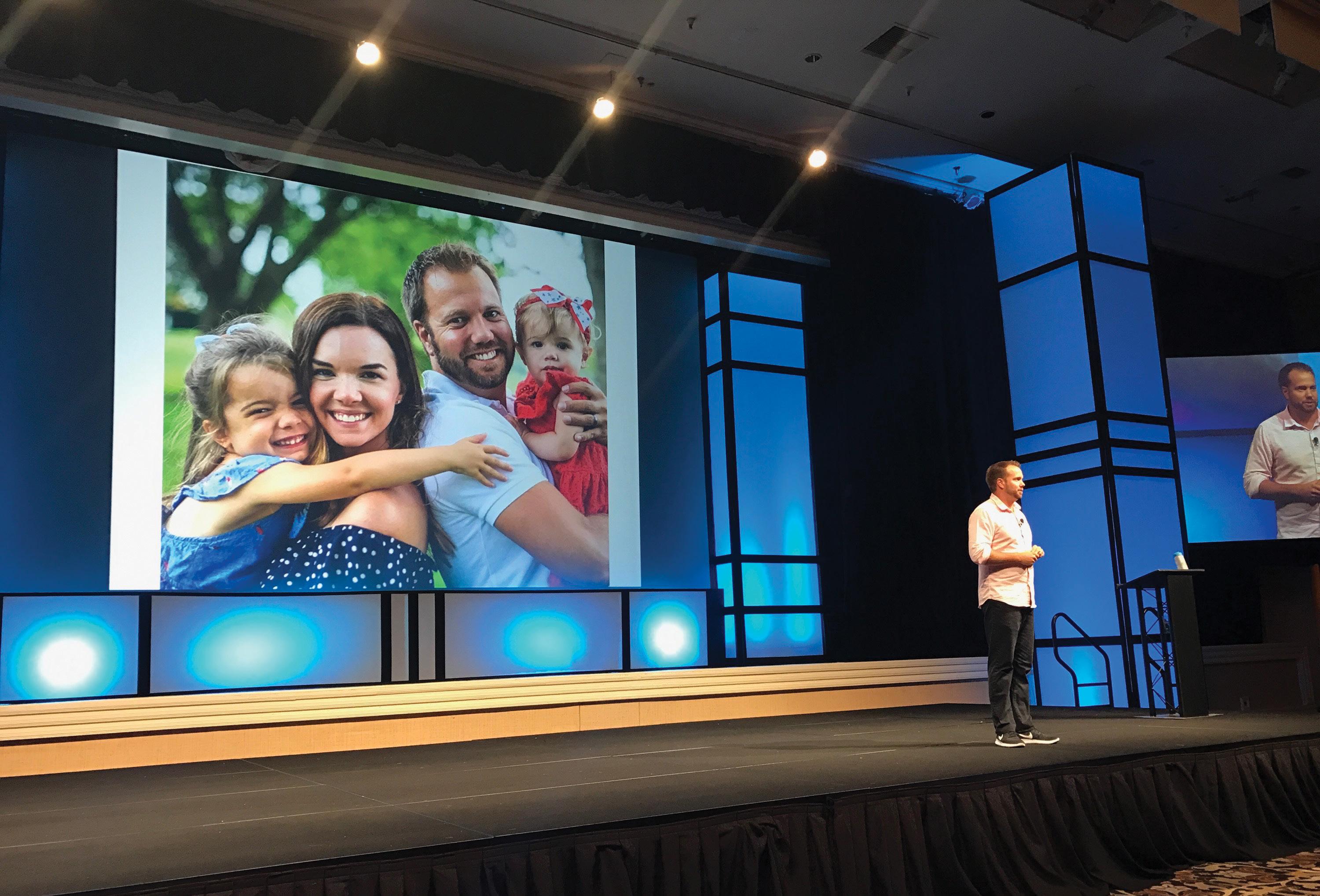


BRANDI SPURLING
“Competitive” and “funny” might be good adjectives to describe Brandi Spurling. She launched her new company, Spree Culture Co. (formerly Sage Culture Co.) and her speaking career in one fell swoop.
“A friend texted me about a speaking competition the week I announced my new company,” Spurling says. “I applied to speak, was chosen, presented at the conference to over 100 attendees in my breakout session, won, and booked my rst four paid speaking gigs within a month. e rest, as they say, is history.”
How do you use a bachelor’s degree in theatre, a master’s in strategic leadership, and a penchant for stand-up
comedy? You hit the circuit, speaking to a handful of people, thousands, or numbers in between.
“Keynote speaking has been the best Venn Diagram of so many parts of my life,” Spurling says. “Because of that, it just doesn’t feel like work. It feels like a playground I get to go to every day, test out new ideas, question old ones, try out new jokes, and connect with copious amounts of strangers in the process.”
Spurling also hosts a podcast, “Dear Leaders: Love Your People.” But public speaking has become central to her and her company.
“ e very nature of this industry can be volatile and uncertain,” she says. “I would be crazy to say that the scarcity
mindset doesn’t creep in every now and then and whisper: ‘Welp. Sure hope we get enough bookings this year.’”
So far, so good. Spurling’s keynotes have taken her across the country and virtually to 10 other countries. She’s logging more than 55 engagements per year. Nonetheless, she still gets nervous in front of a crowd.
“I use mindfulness techniques like EFT [Emotional Freedom Technique] tapping, meditation, or just good ol’ singing at the top of my lungs in the car to calm the nerves that inevitably come.”
What else does Spurling want people to know about her?
“My husband is a re ghter, and he’s smoking hot.”
Building Community Around Cars
GKR Motor Cars ready to break ground on ‘car condos.’
STORY AND PHOTOS BY BRANDON KNIGHT
As the sun rises over the horizon, you can hear a Ford Mustang GT350 roaring down the track at Ozark International Raceway. at’s the sound of the First Annual GKR Motor Cars Track Day. is event isn’t just a marketing play — it’s part of a much bigger plan to build a community around GKR.
“We just want to get some camaraderie, community, cars on the track, and have a good time,” said Tyler Willy, owner of GKR Motor Cars.
GKR is a relatively new automotive business located just outside the city of New Bloom eld. e name GKR comes from the men who have inspired Willy along the way. e “G” refers to his Grandpa Gary, who showed him how to be genuine and have grace. e “K” is in honor of his Uncle Kyle, who taught him about work ethic. Lastly, the “R” comes from his two dads, Roger and Randy, but also his Uncle Rod. Rod taught Willy condence; he got creativity, building, and design from his father Roger; and he learned calmness from his father Randy.
Before starting GKR Motor Cars, Willy worked at Veterans United. It was inspiration from his wife and the Discovery Channel’s hit show Fast N’ Loud, though, that prompted Willy to set sail on his new business venture. At GKR, he and his crew restore cars to their former glory — and oftentimes beyond it. To him, spec builds are more rewarding; however, they can grow to be stressful because of the time and money commitment. Custom cars provide a more consistent cash ow for the business.
“Growing up on a farm, I didn’t have access to many cars, just trucks and tractors. As I got older and could a ord more, I started enjoying cars,” Willy said. “Having the shop lets me drive some of these cars before selling them or delivering them to customers, which is a perk.”
GKR has built several notable cars so far. A few to mention are a 1977 Ford Bronco, a Shelby Cobra replica, and a 1977 Pontiac Trans Am, called e Bandit. Famously, this car was originally featured in the hit lm Smokey and e Bandit
“Yeah, I mean e Bandit Trans Am last year was by far our biggest-bill, huge success, went to a customer in L.A. But right now, we’re getting ready to nish up a ’69 Camaro that’s gonna even top that car and … should establish us as the premier car builder [and show] that people can trust us with their pride and joy,” Willy said.
Beyond building cars, GKR has been working since May on creating “car condos” for car enthusiasts across mid-Missouri.
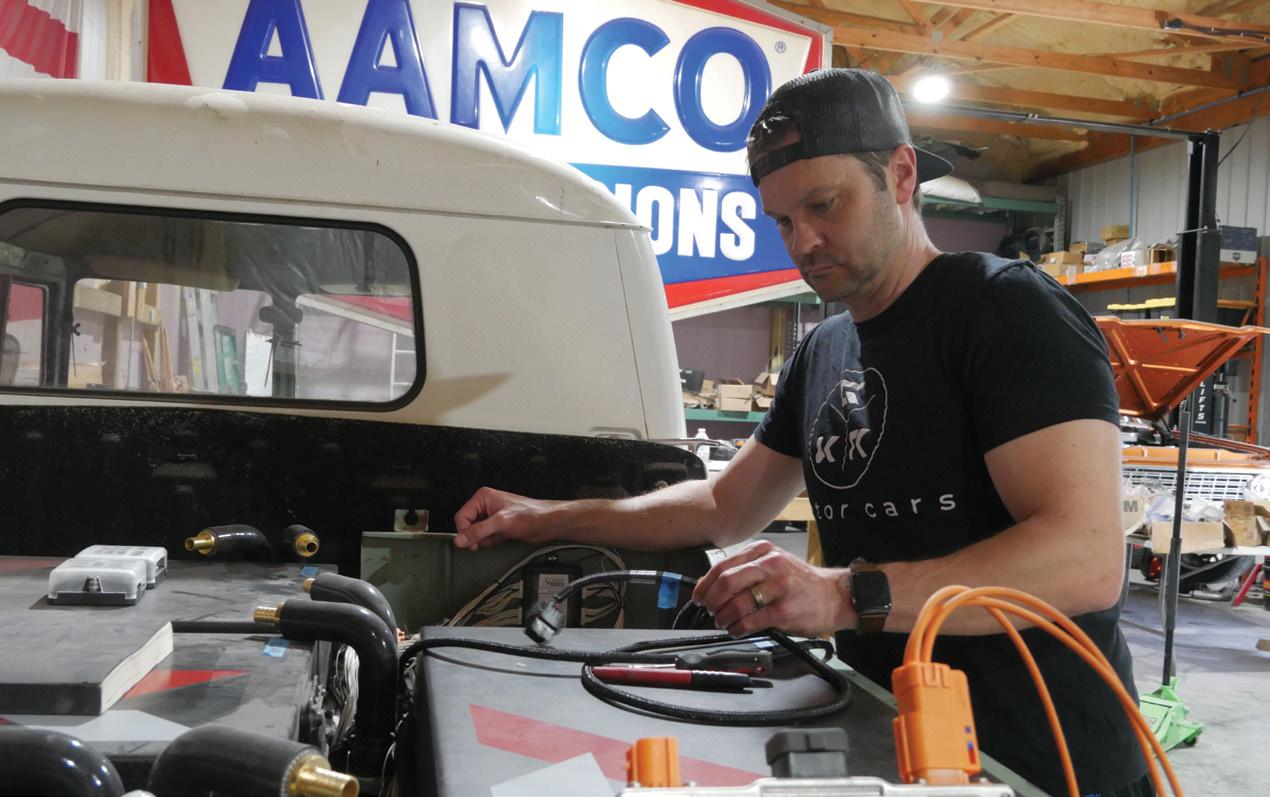


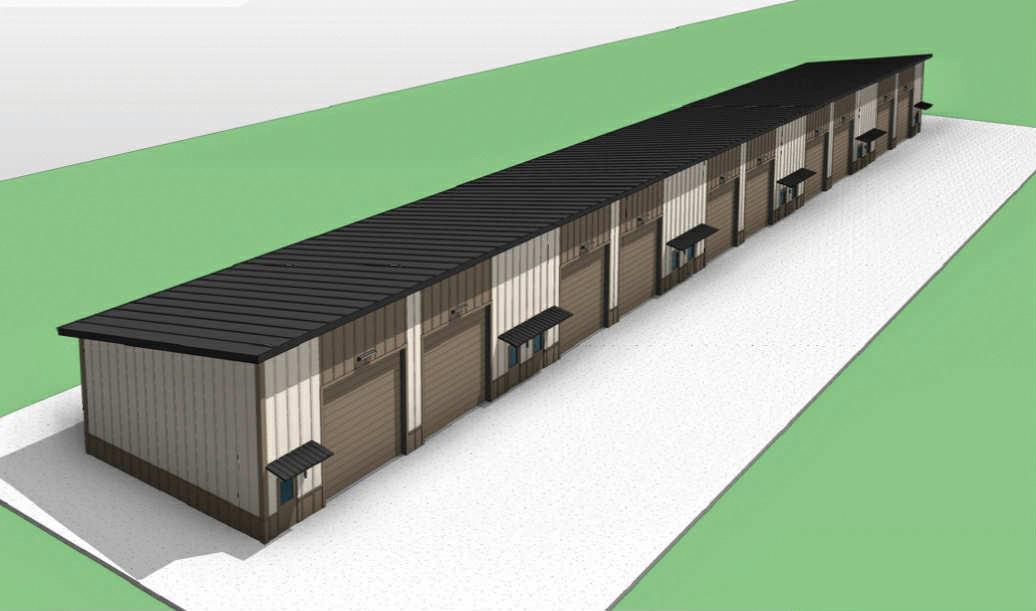

ese private luxury garages are a relatively new concept, and their popularity has risen quickly. Car condos are now being built in many places across the country. Kansas City and St. Louis have their own take on car condos, and now e Toy Box Lux Lofts are being built at the Lake of the Ozarks as well.
For the average person, this probably doesn’t mean much. However, for a car lover in midMissouri, the GKR Car Campus is an opportunity to build a community around their hobby. Consider it the auto enthusiast’s equivalent of a neighborhood built on a golf course or near an air strip.
e project is set to be constructed in phases. During phase one, the rst nine condos will be built, each with 1,000 square feet of “blank canvas” with which owners can create their own dream garage. GKR will own one of the nine condos, and ve of the remaining units are already spoken for. at leaves three condos still up for grabs.
Prices start at $205,000, well below the average home price in Columbia. If the upfront cost is out of reach, each unit can be split among three owners. As more condos are built, the price is set to go up.
Once complete, the campus will have a total of sixty-six condos and include an “Autorimessa,” which will allow customers to rent space to store a car or an entire collection. e space will be temperature controlled and provide power for battery tenders. In addition, the campus will feature a 12,000to 14,000-square-foot event center and partner shops that will enable other automotive entrepreneurs to provide services for the automotive community.
“Community is de nitely the forefront of what we’re doing out here,” Willy said. “ ese aren’t just storage facilities to hang out in. We want people to interact with each other.”




Catalpa: A Taste of Talent in Arrow Rock
BY SUNITHA BOSECKER
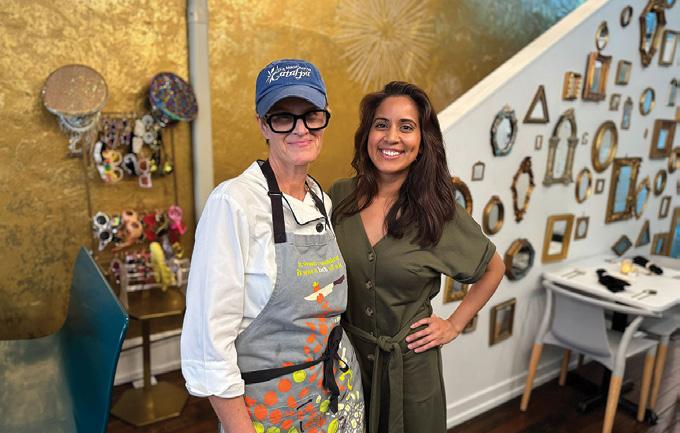

Talent is often celebrated at sporting events and concerts, but sometimes it’s found in small restaurants in unexpected towns, like Arrow Rock. at’s where chef Liz Hu quietly showcases a rare form of artistry at Catalpa, her ne dining restaurant, where every plate feels like a personal performance.
An Experience, Not Just a Meal Dinner at Catalpa isn’t a quick outing. On a recent Saturday, a six-course Italian dinner stretched to nearly three and a half hours — a slow, sensory experience where each dish was packed with its own story and avor.
Each course arrived on its own timeline. e pancetta pasta fazool was outstanding, a hearty yet delicate soup layered with fresh tomatoes and the most satisfying crunchy bacon bites. It was rustic and comforting, the kind of dish that makes the world feel better.
“It’s not just dinner — it’s an experience,” one diner remarked between courses.
e Evolution of Catalpa
Catalpa, like its chef, has seen reinvention after reinvention. e restaurant rst opened in 2002, tucked inside a small, red-painted brick house. e intimate setting and delicious food quickly made the restaurant a favorite among locals and travelers.
After two years, Hu took an unexpected pause, stepping away to focus on recovery. “I closed and went to drug and alcohol treatment, which de nitely needed to happen at the time,” she says with disarming honesty. at chapter took her far from Arrow Rock. “I thought I was out of the restaurant business,” she admits. “But eventually, I went back to Catalpa in 2011 and stayed until 2020.”
en came the pandemic. Hu pivoted to pizzas, burgers, and boozy milkshakes served right from her front yard. But the uncertainty wore on her. “COVID really did me in,” she recalls. “I wanted to expand my outdoor space, and when that didn’t work out, I purchased the boardwalk building.”

Central Missouri Humane Society Forges Ahead With Fundraising
BY NATASHA MYRICK
Throughout its almost fty years of existence, the Central Missouri Humane Society shelter at 616 Big Bear Blvd. has provided a refuge for the dogs, cats, and other companion animals of mid-Missouri. As an open-admission animal shelter, CMHS accepts all stray and surrendered animals within its Boone County service area. No animals are turned away. anks to the organization’s e orts, thousands of pets have found a second chance at life by nding their forever homes. In 2024, CMHS used or distributed nearly sixteen tons of pet food, facilitated the adoption of 2,068 pets, and had a 95 percent placement rate for animals brought to the shelter. It also has a pet behavioral team that can work with pet owners whose animals are exhibiting problematic behaviors. ese experts can often help owners nd alternatives to relinquishing their pets to the shelter in the rst place.
What’s remarkable is that CMHS has accomplished all this with an aging facility that no longer meets the needs of its sta and the vulnerable animals they care for.
“ is building presents challenges every single day,” said Michelle Casey, associate director for CMHS. She is quick to point out that while Columbia has doubled in population since 1976, the CMHS building has not kept pace with that growth. She adds, “ e building we are currently in wasn’t designed well for an animal shelter. It no longer provides the level the community expects or the level of care we want to provide.”
At Catalpa, the menu’s always changing — just like its story. Scan the QR code to see what Chef Liz Huff is cooking up.
The shelter’s challenges are mounting, but so is the hope for what comes next. Scan the QR code to learn how you can help.
. . .
What makes a great neighborhood?

Knowing neighbors and their dogs, sharing from the gardens, mowing for each other, shoveling or snow blowing for one another, making baby quilts for the newest baby on the street. It’s the people that make a great neighborhood!!!
— KARI ANN
I love seeing kids playing in the streets, feeling safe in the neighborhood, and when the neighbors are polite and give you the Midwestern wave.
— ASHLEY LASITER
We have a Girlz Bookclub! It is a neighborhood of modest homes, and
through the bookclub we get to know each other. We also have a sweet little park within walking distance, so we get out, see each other, and chat. Also our neighborhood seems to have a lot of dogs, so people are out and about. e only downside is we have is no sidewalks. Oh, we are close enough to the Forum shopping center so I can literally walk over there to get the milk or spice I forgot! We also have a bit of a mix of rentals and even an Airbnb, I think, so we have economic diversity. I love our neighborhood!
— DIANNA BORSI O’BRIEN
Everyone keeps an eye on the kids. Hear voices raised in anger or alarm?
Every adult in hearing range rushes out to see what’s happening, to see if a child needs help. Doesn’t matter whose child it is.
— TISH JOHNSON
For me, a great neighborhood has sidewalks, trees, and walkability to community third spaces. When you can stroll and hang out in the park, the library, or a co ee shop, you naturally cross paths with your neighbors, make connections, and build community. Being among your neighbors and building those connections are what make a neighborhood feel like home. My favorites have been East Willy Street in Madison, WI; Oakhurst in Decatur, GA; and Fourth & Gill in Knoxville, TN — they all have that charm and sense of community.
— JORDAN WATTS
“Imagine what our real neighborhoods would be like if each of us o ered, as a matter of course, just one kind word to another person.”
— CAROLYN SULLIVAN, quoting Mr. Rogers
I’ll admit it, and I bet I’m not the only one: I know the names of more dogs than people in my neighborhood. And I’m guessing that some of the people who know my dogs’ names don’t know my name. Such is the connection among dog owners. Of course, it’s pretty cool when you learn names and get a bit of history of everyone you encounter. But the neighborhood rst must be walkable — preferably good sidewalks — and drivers who watch their speed, keeping an eye out for kids playing in the street. We have wonderful neighbors.
— JODIE JACKSON JR
